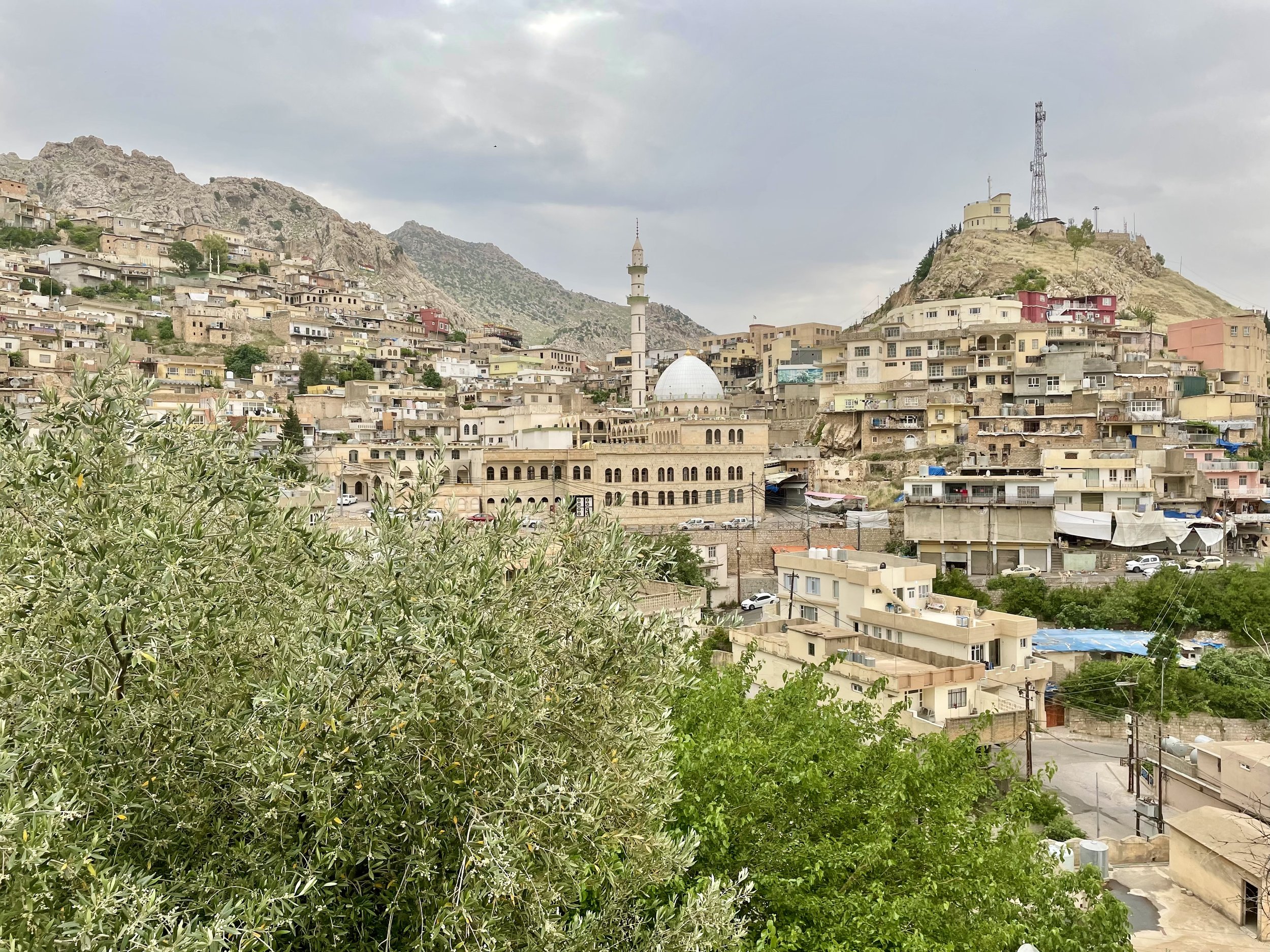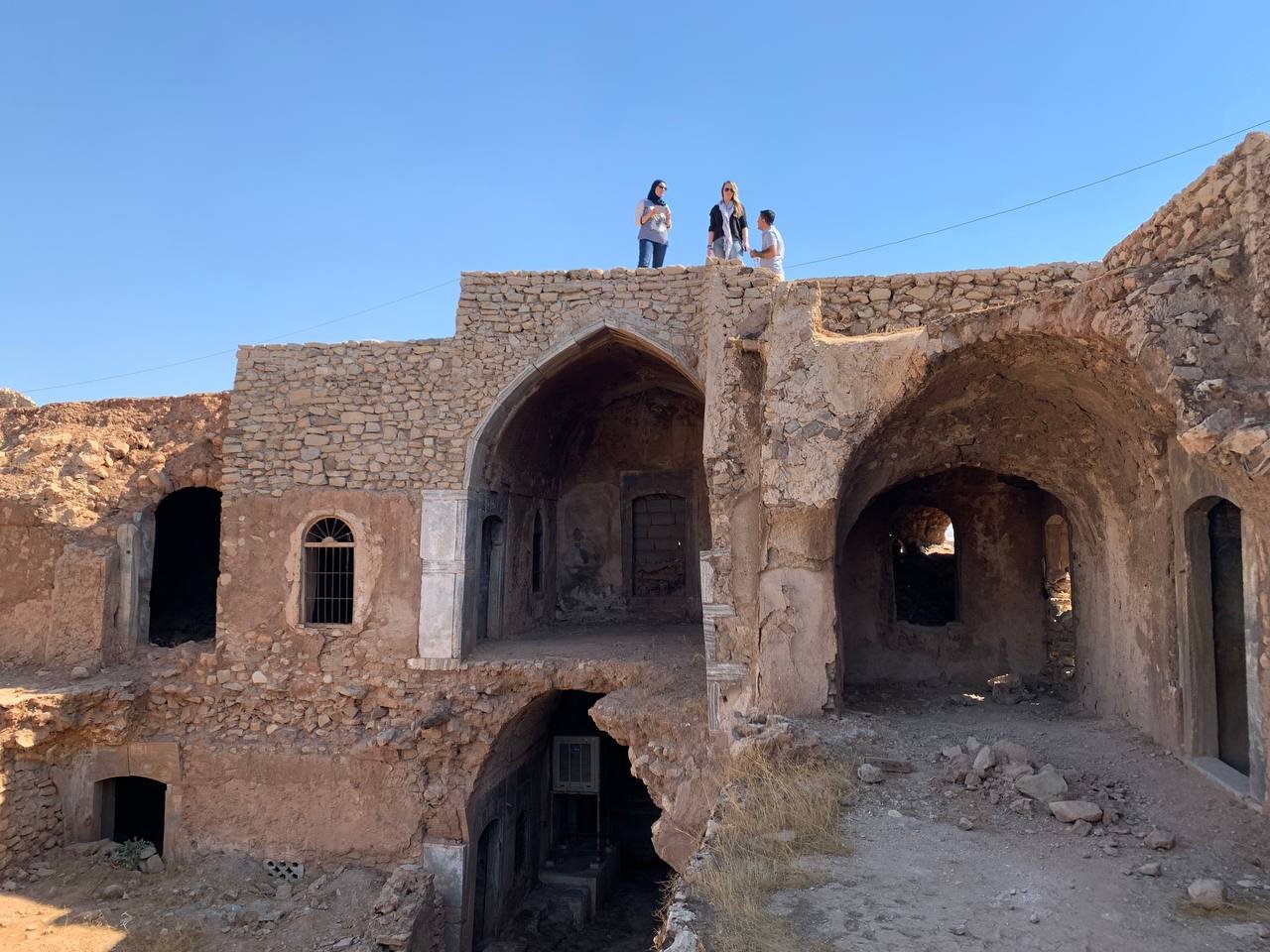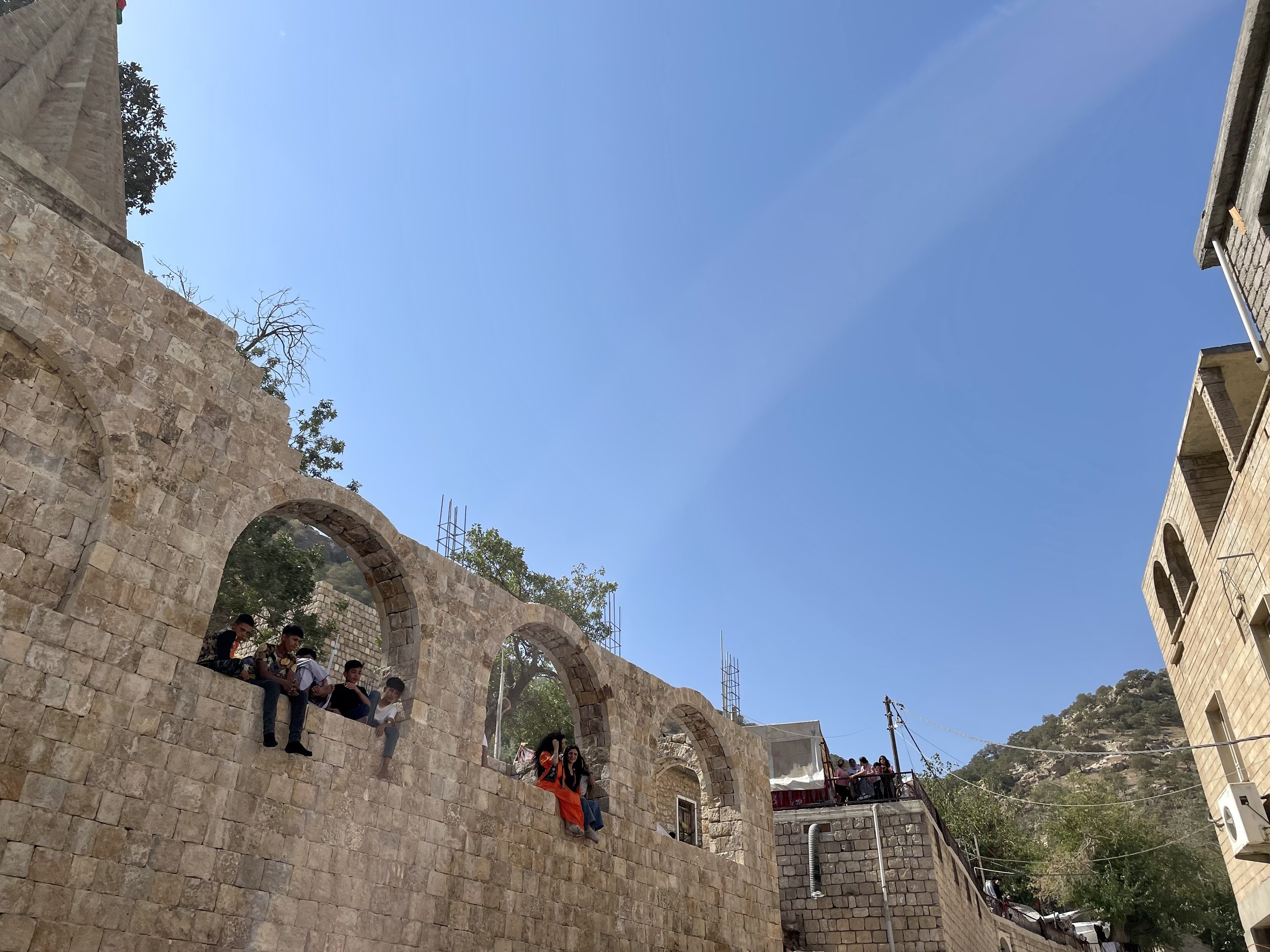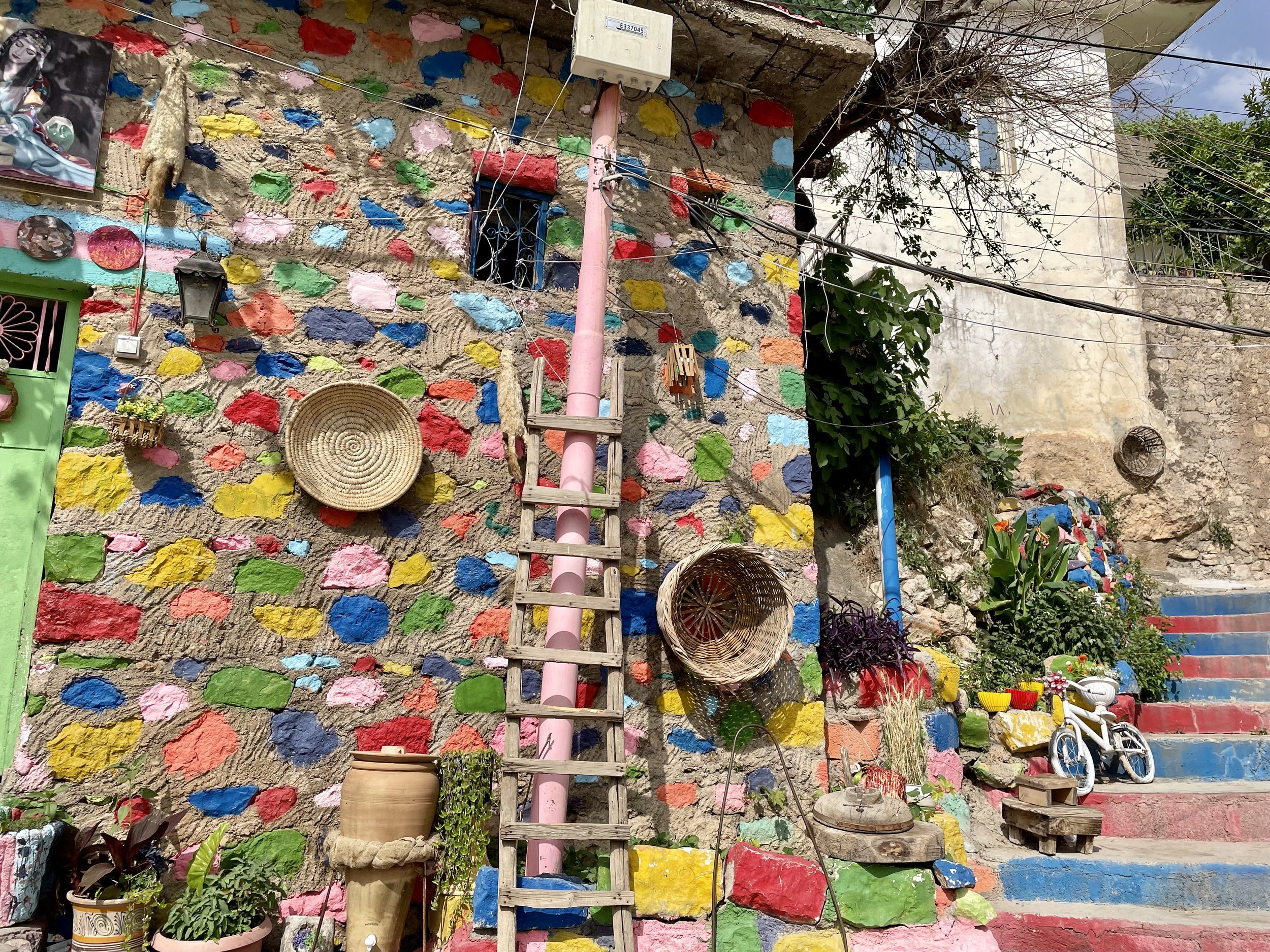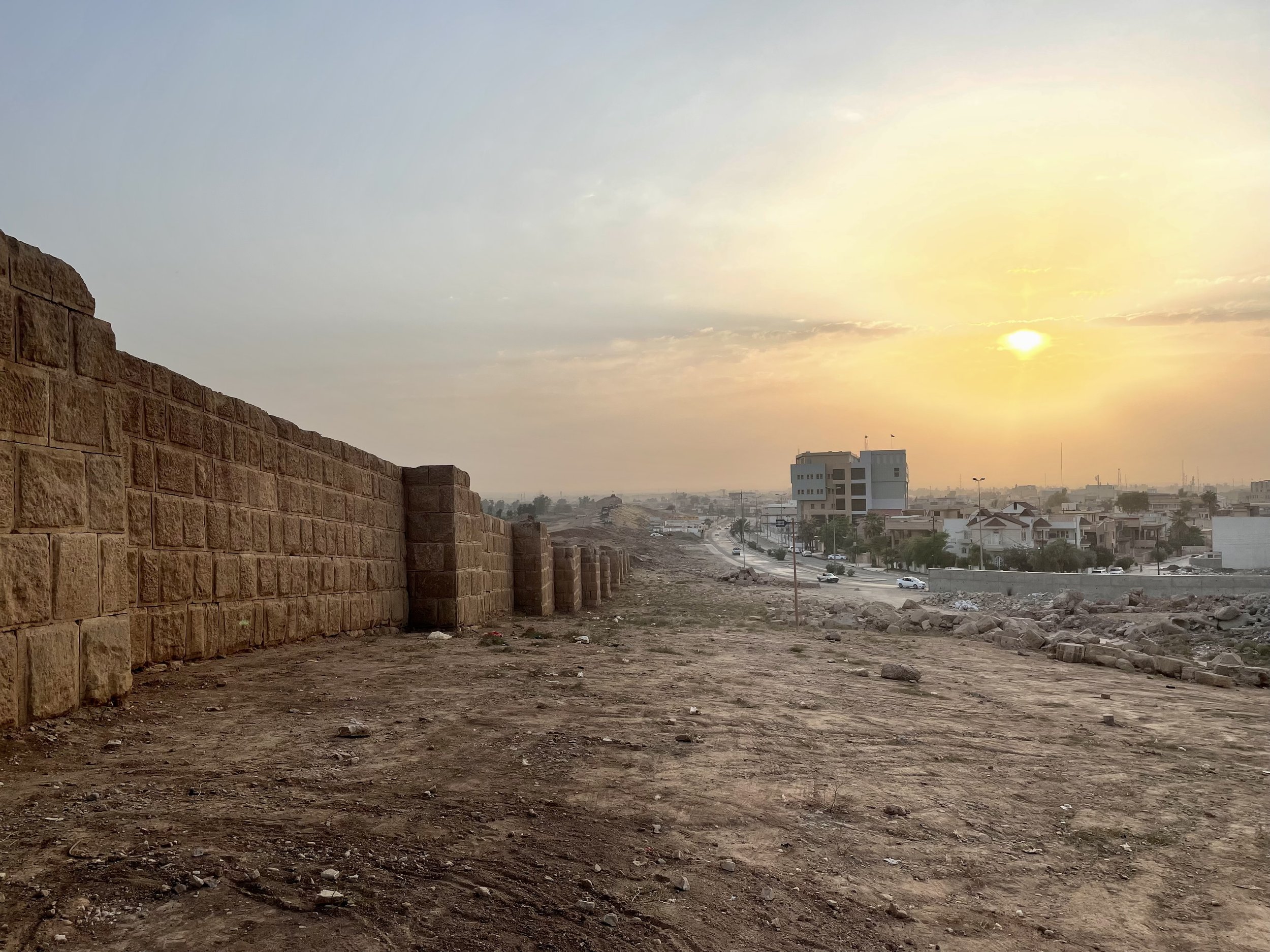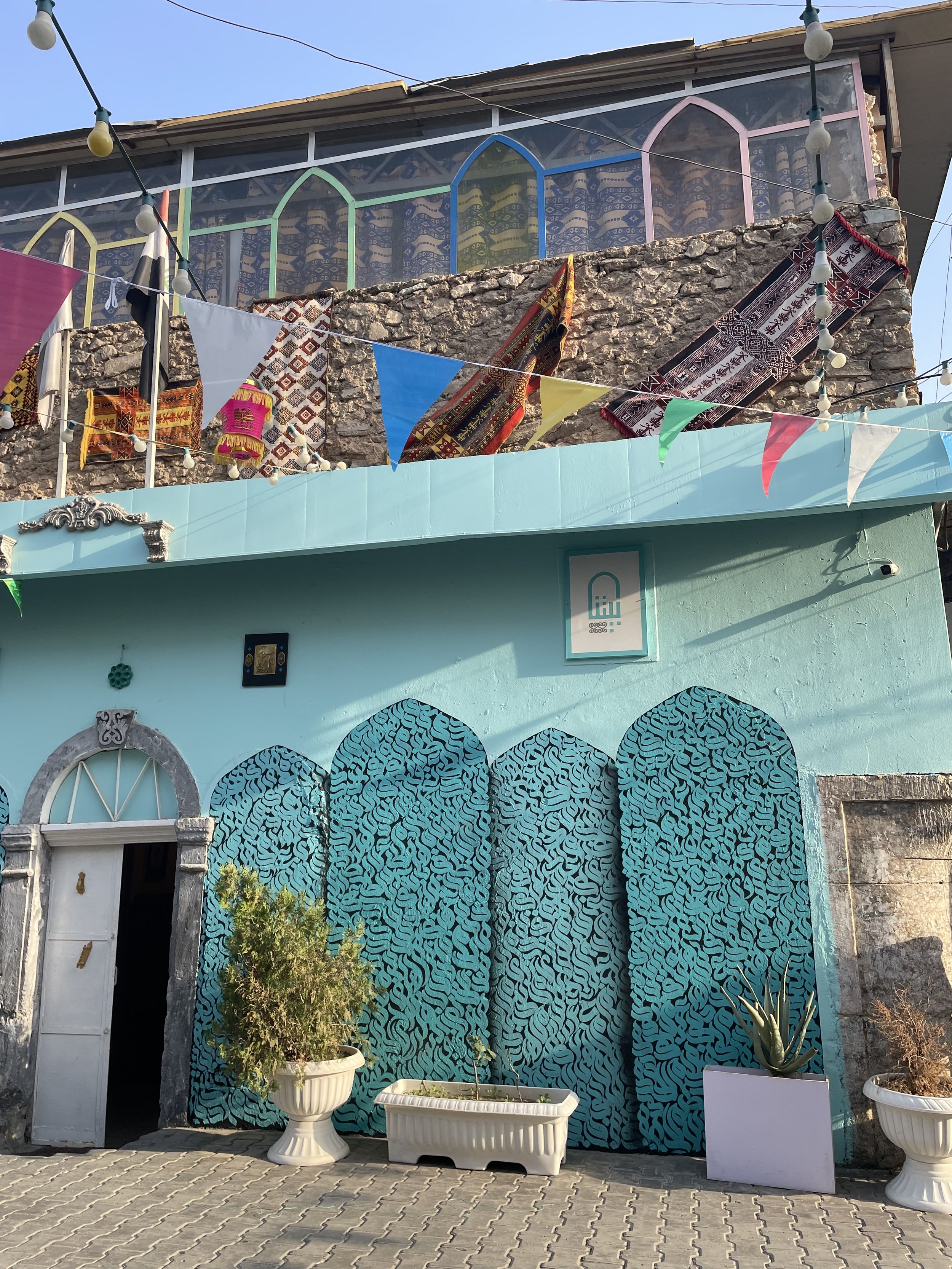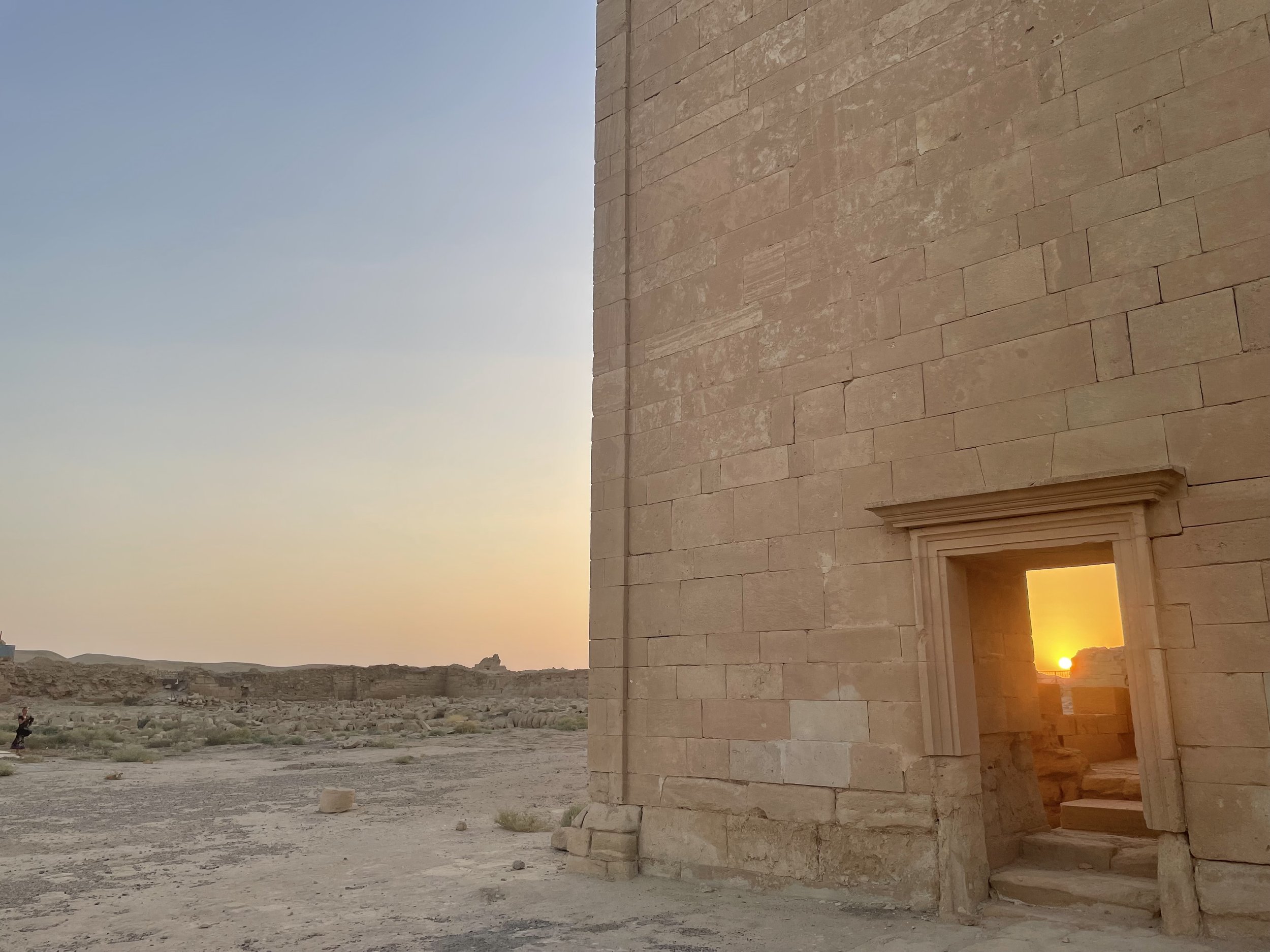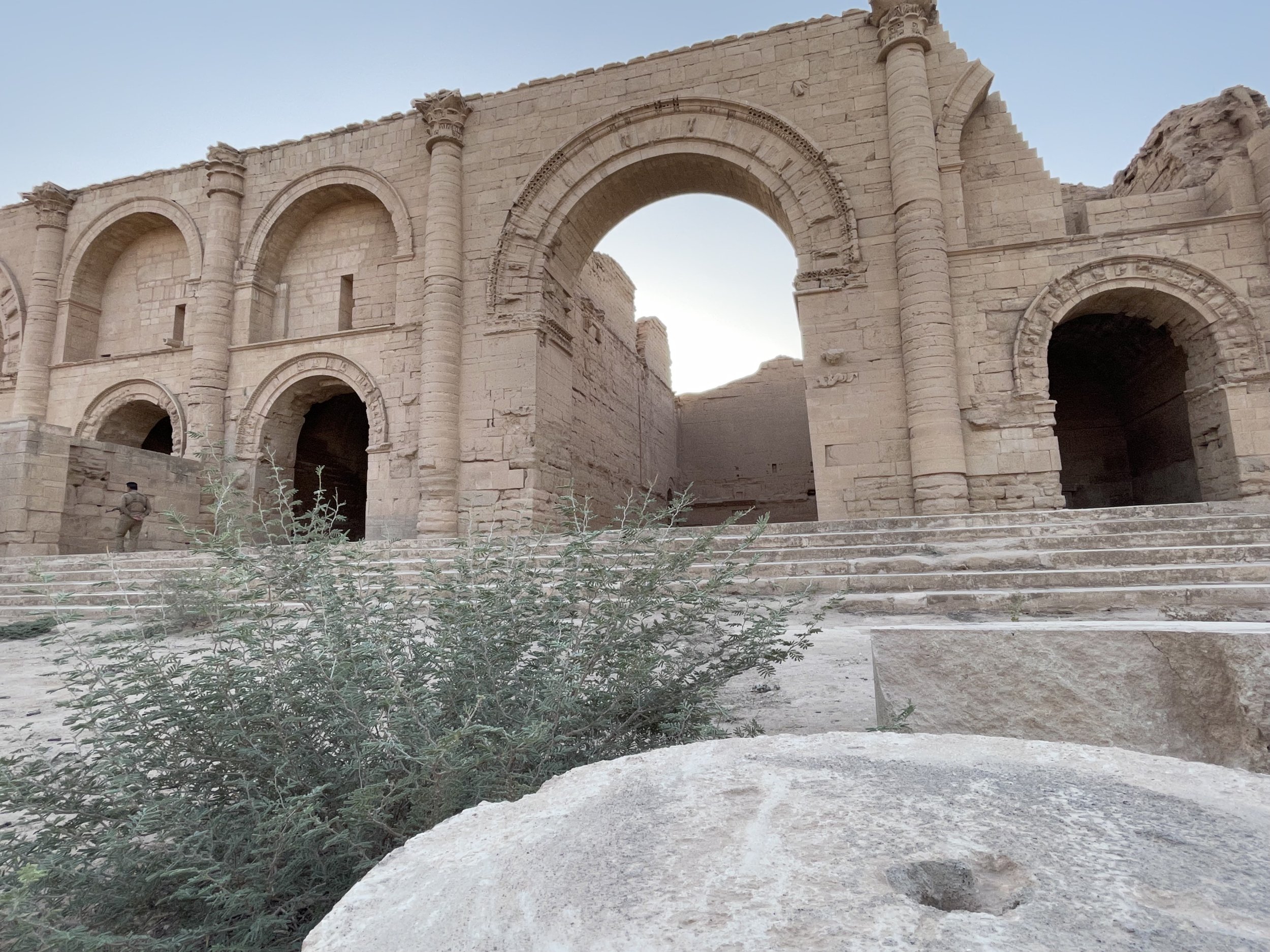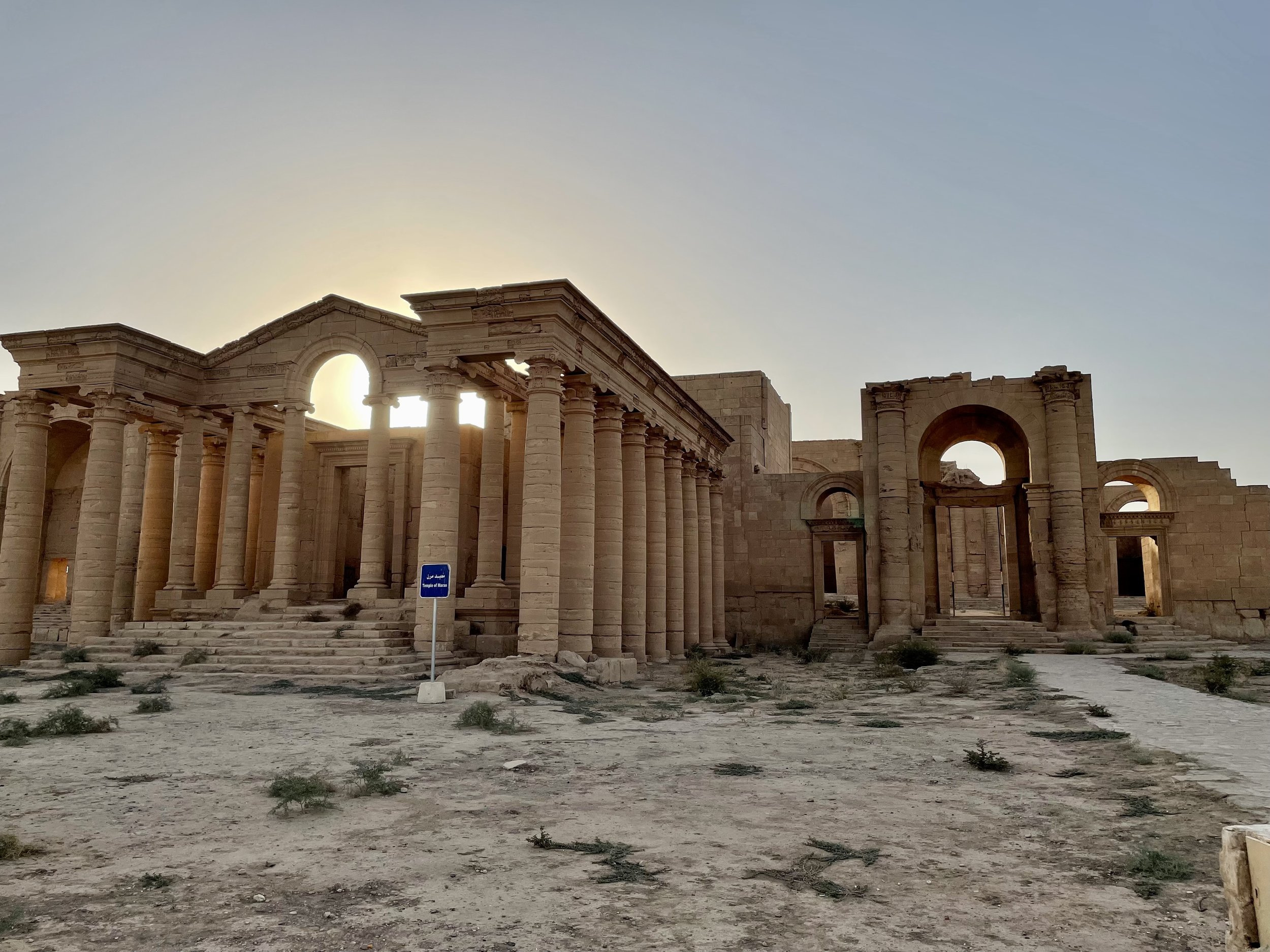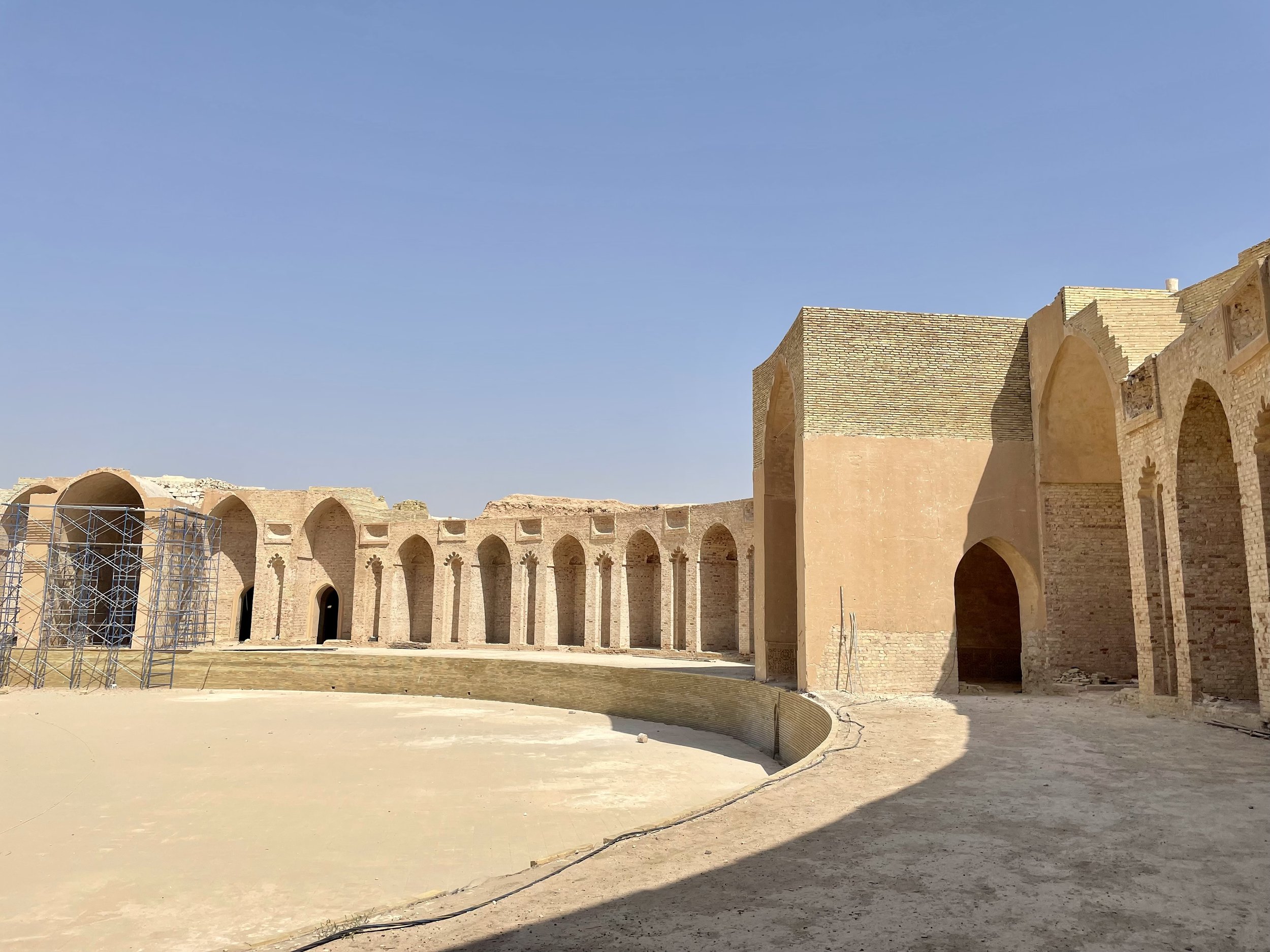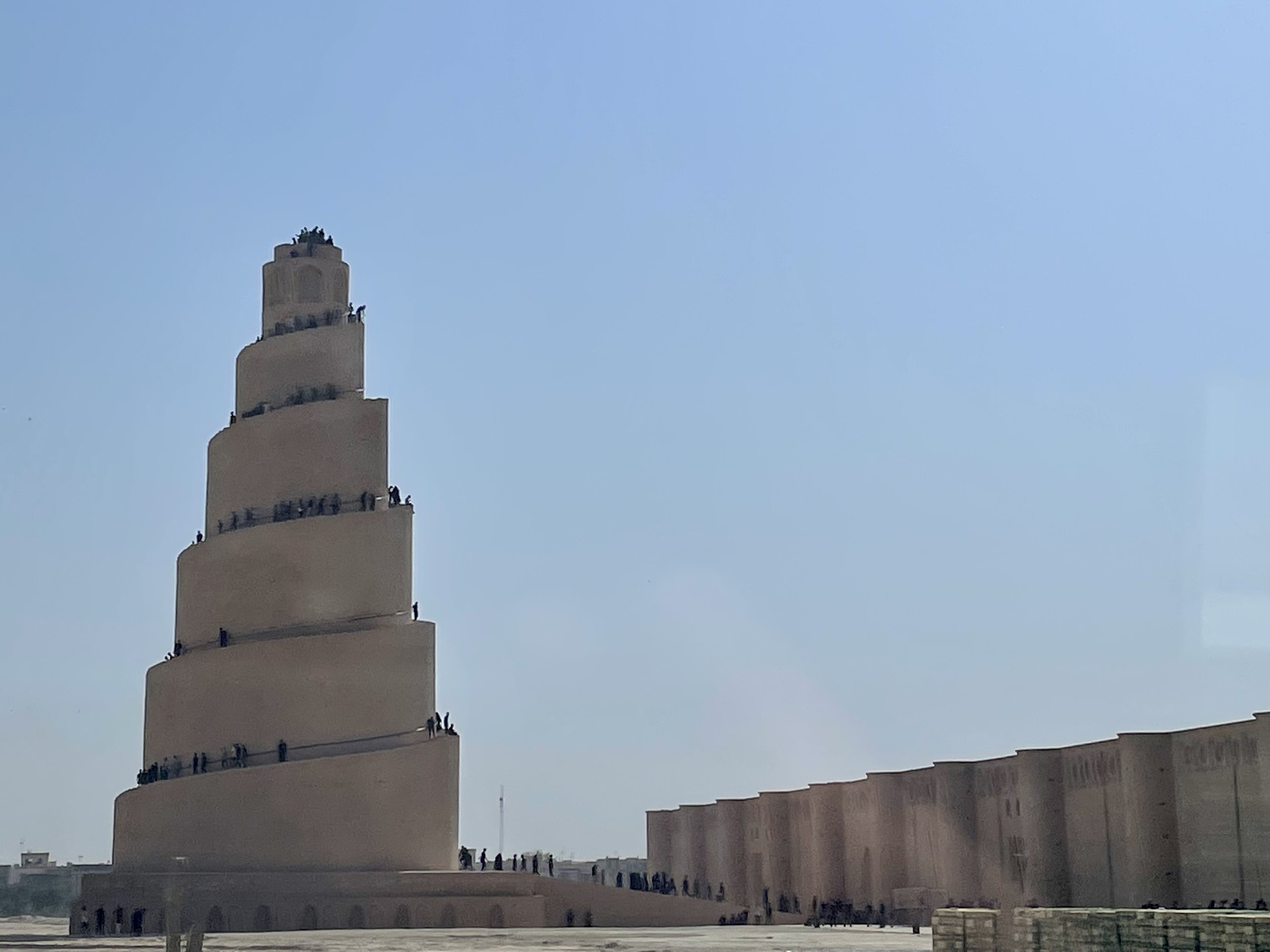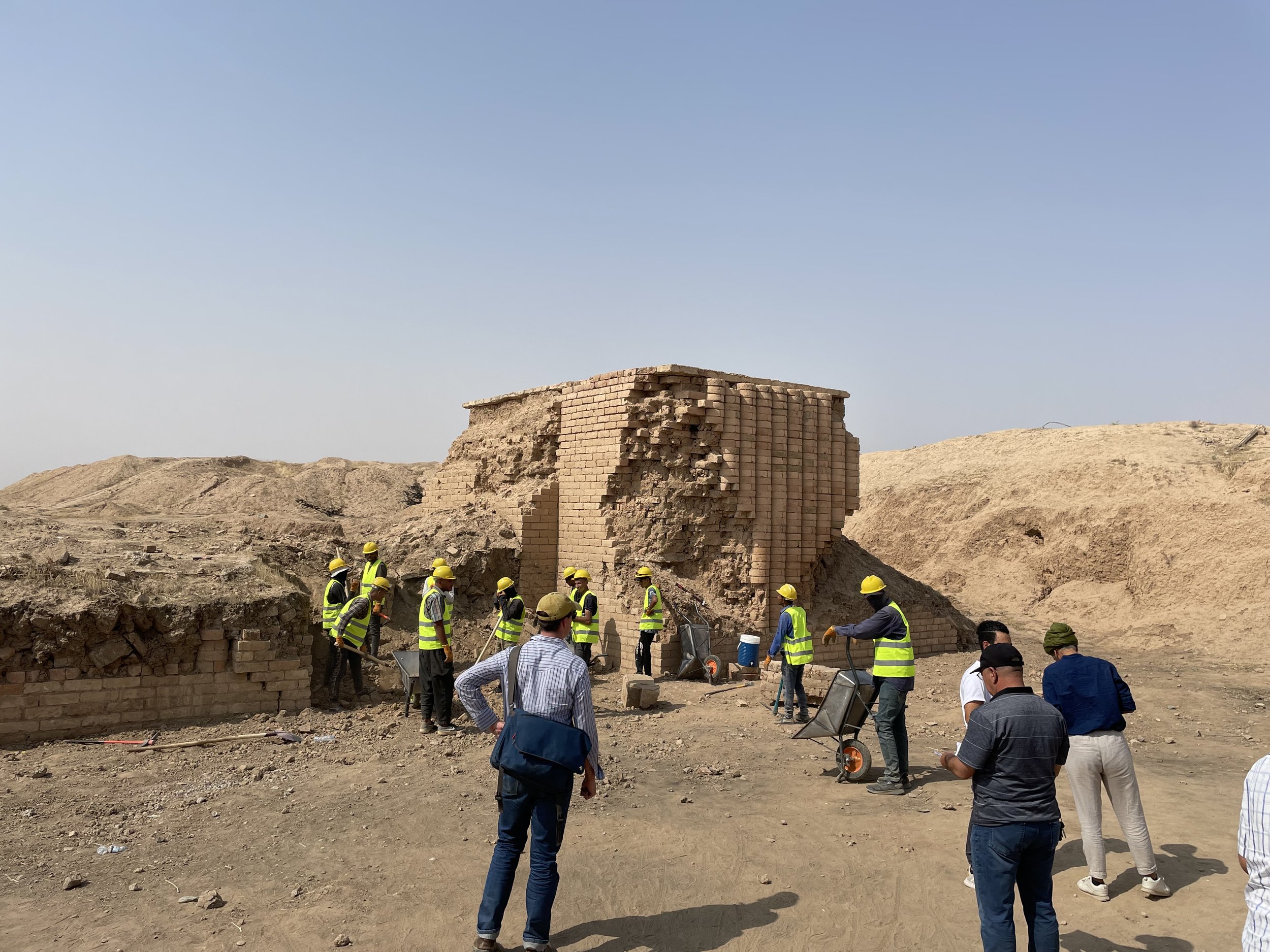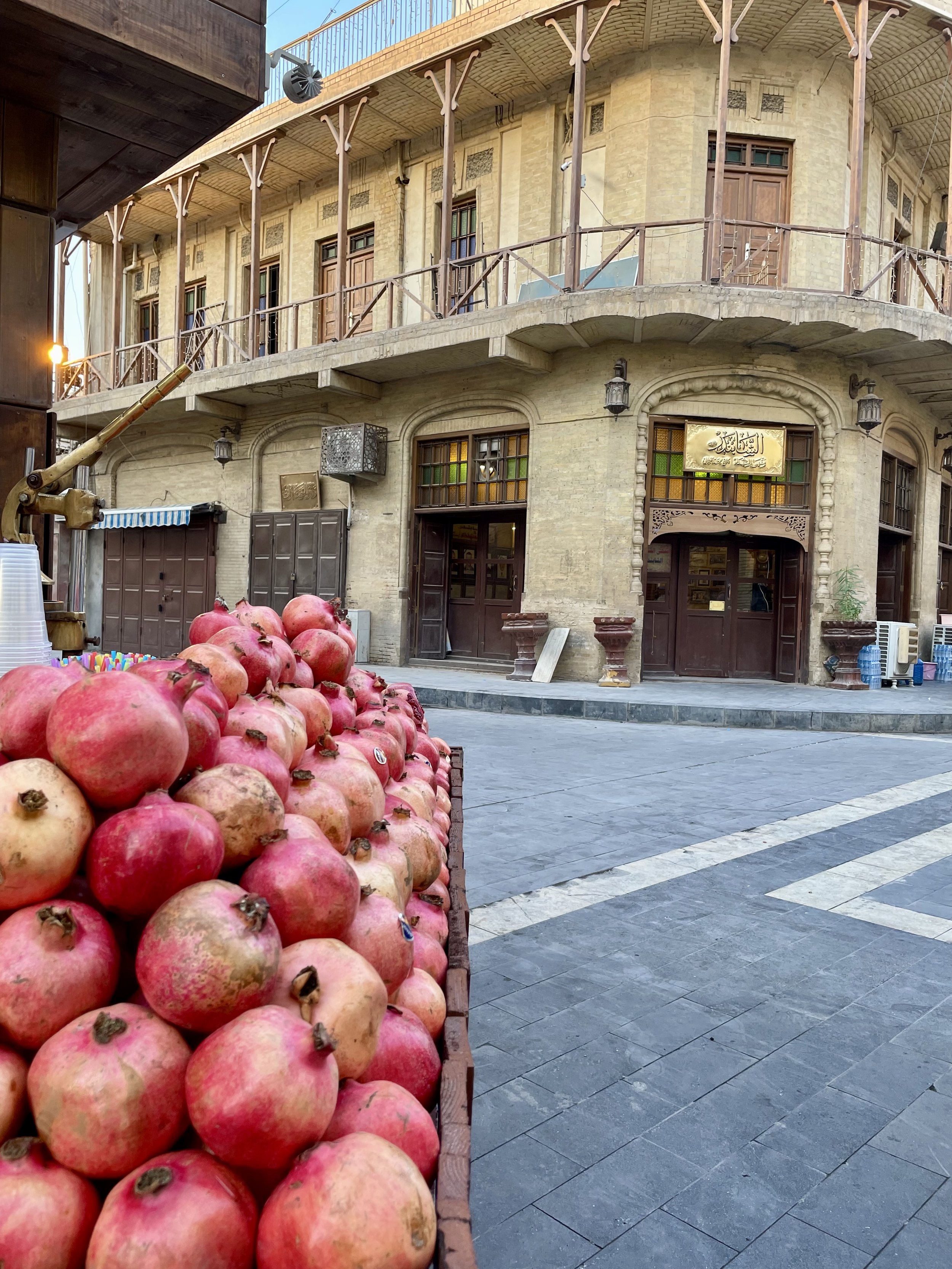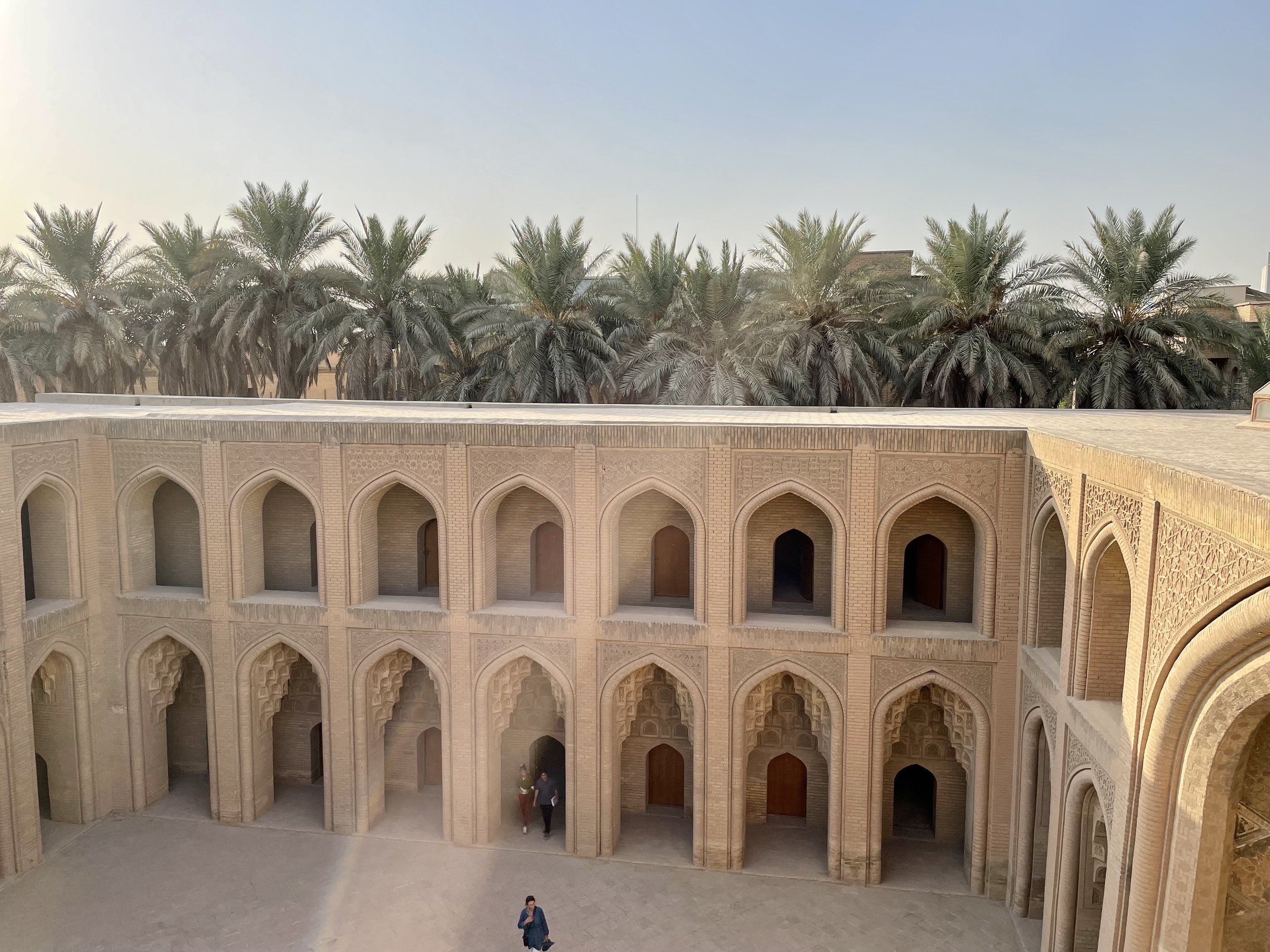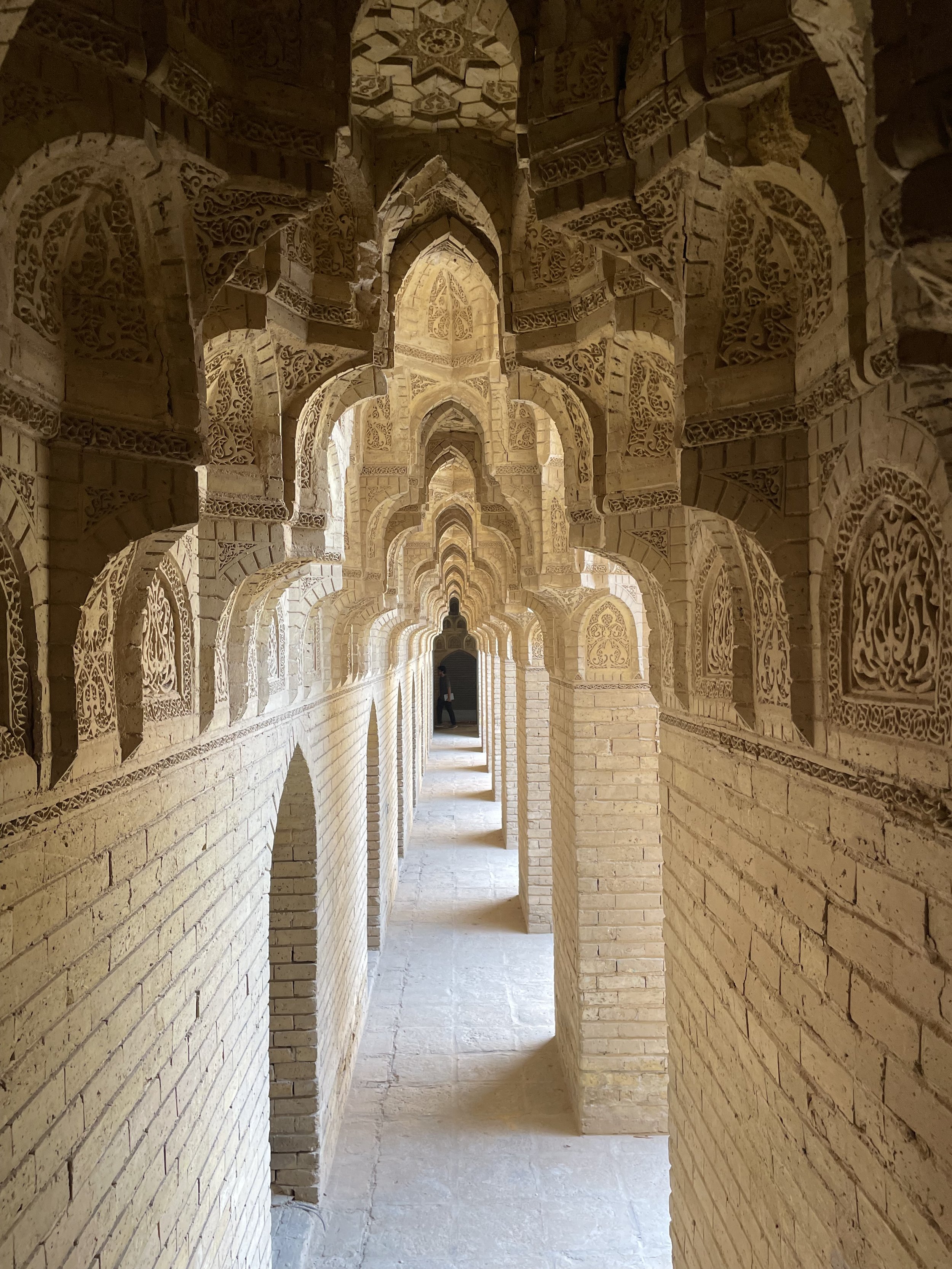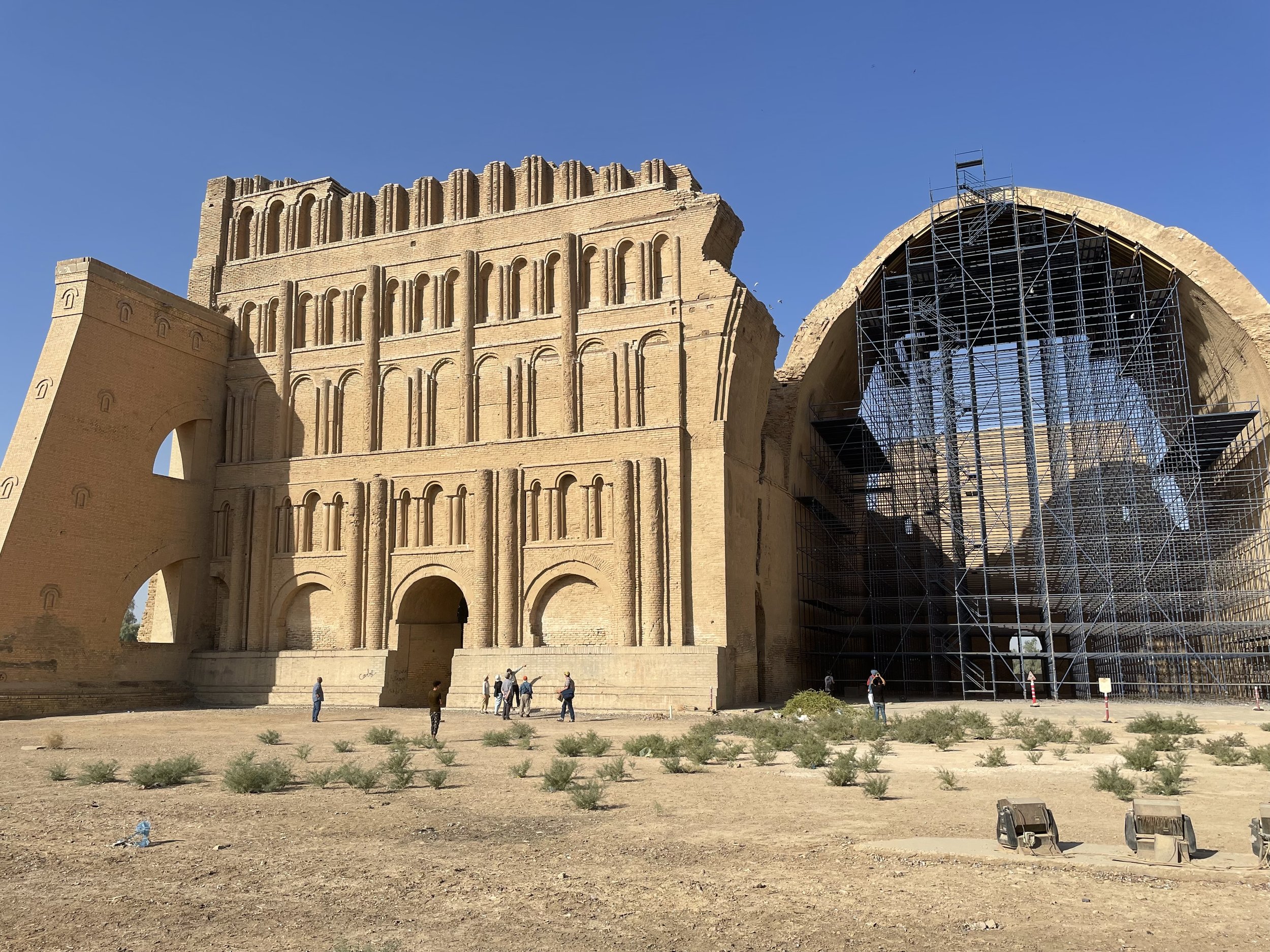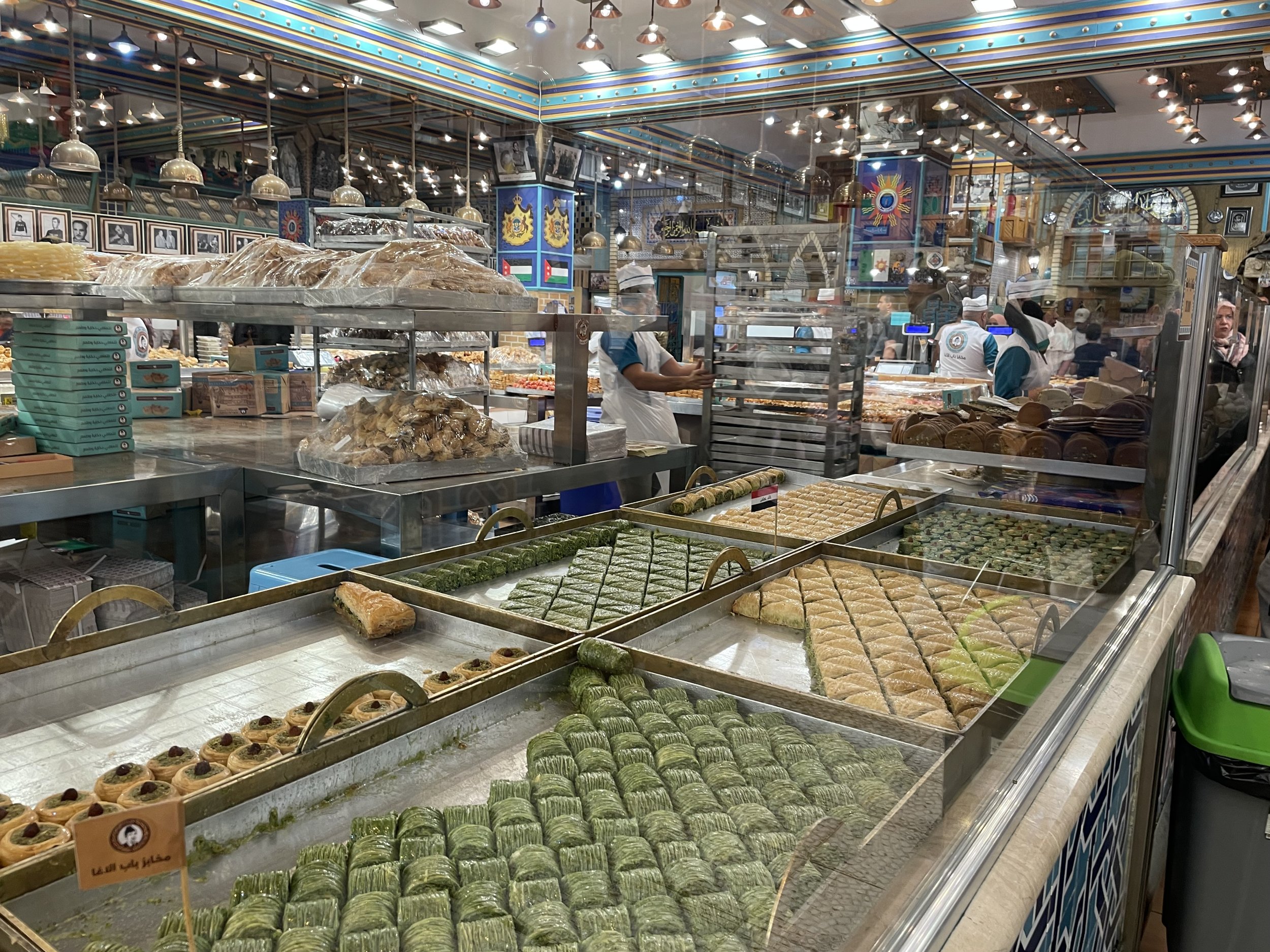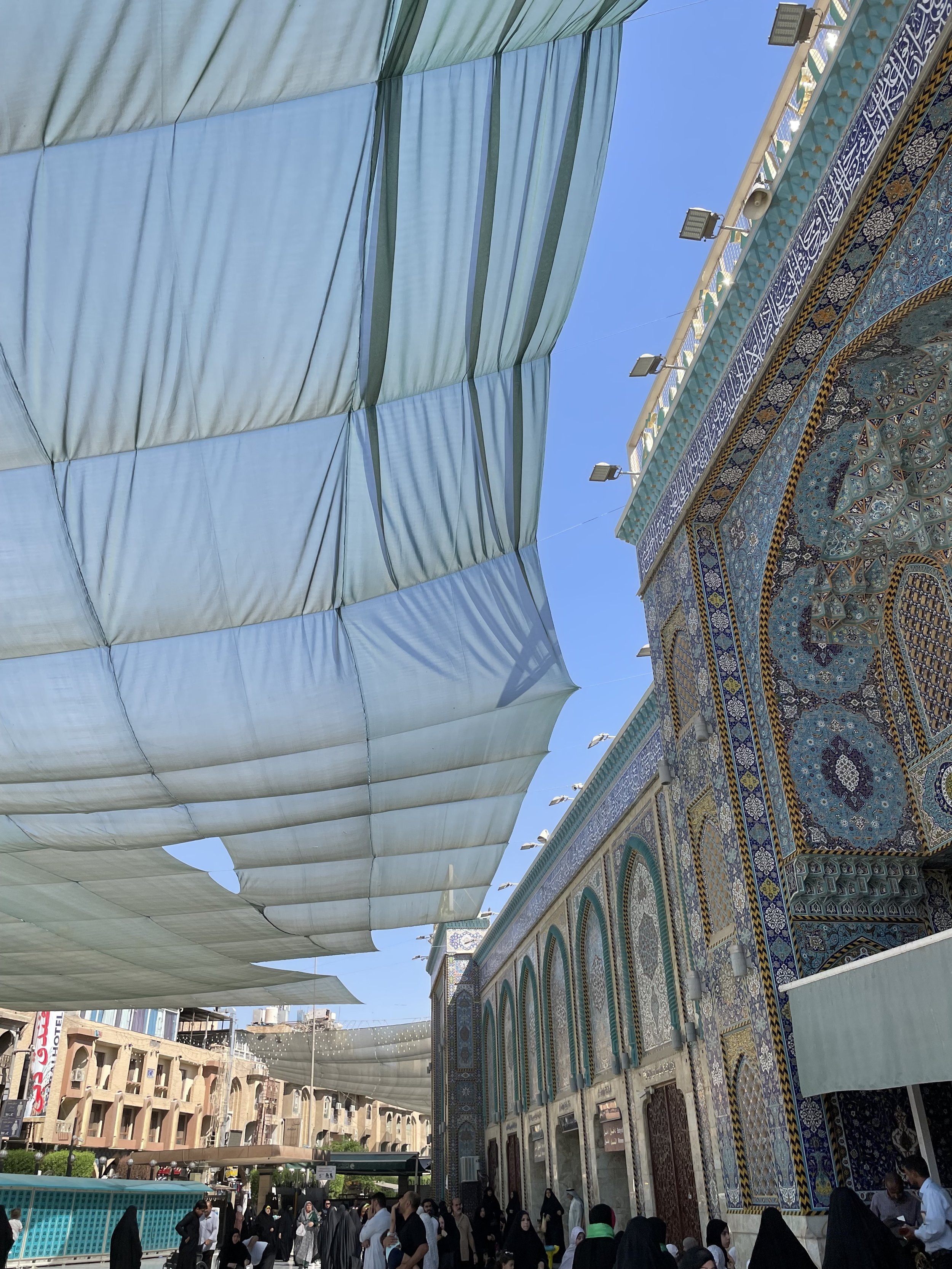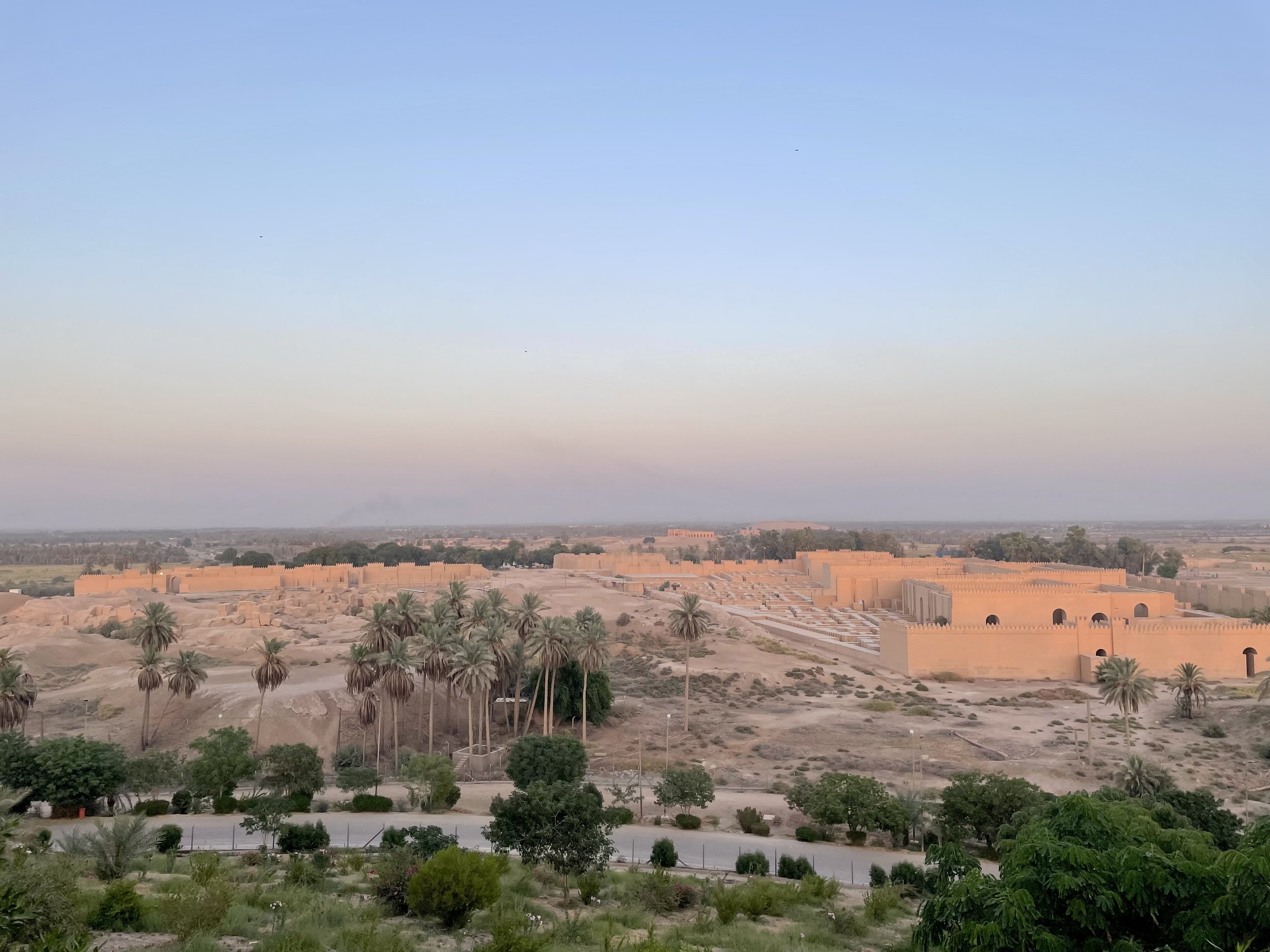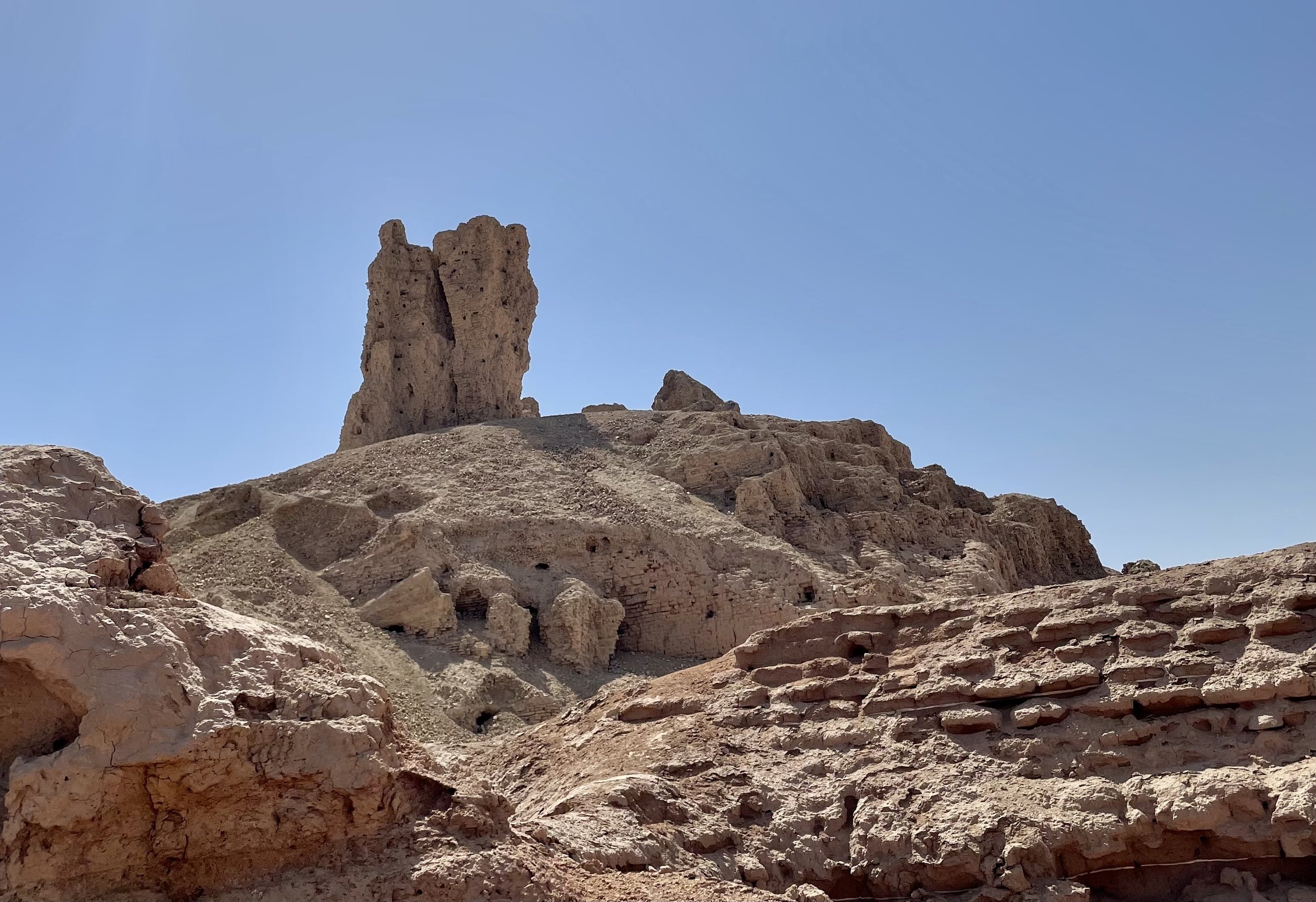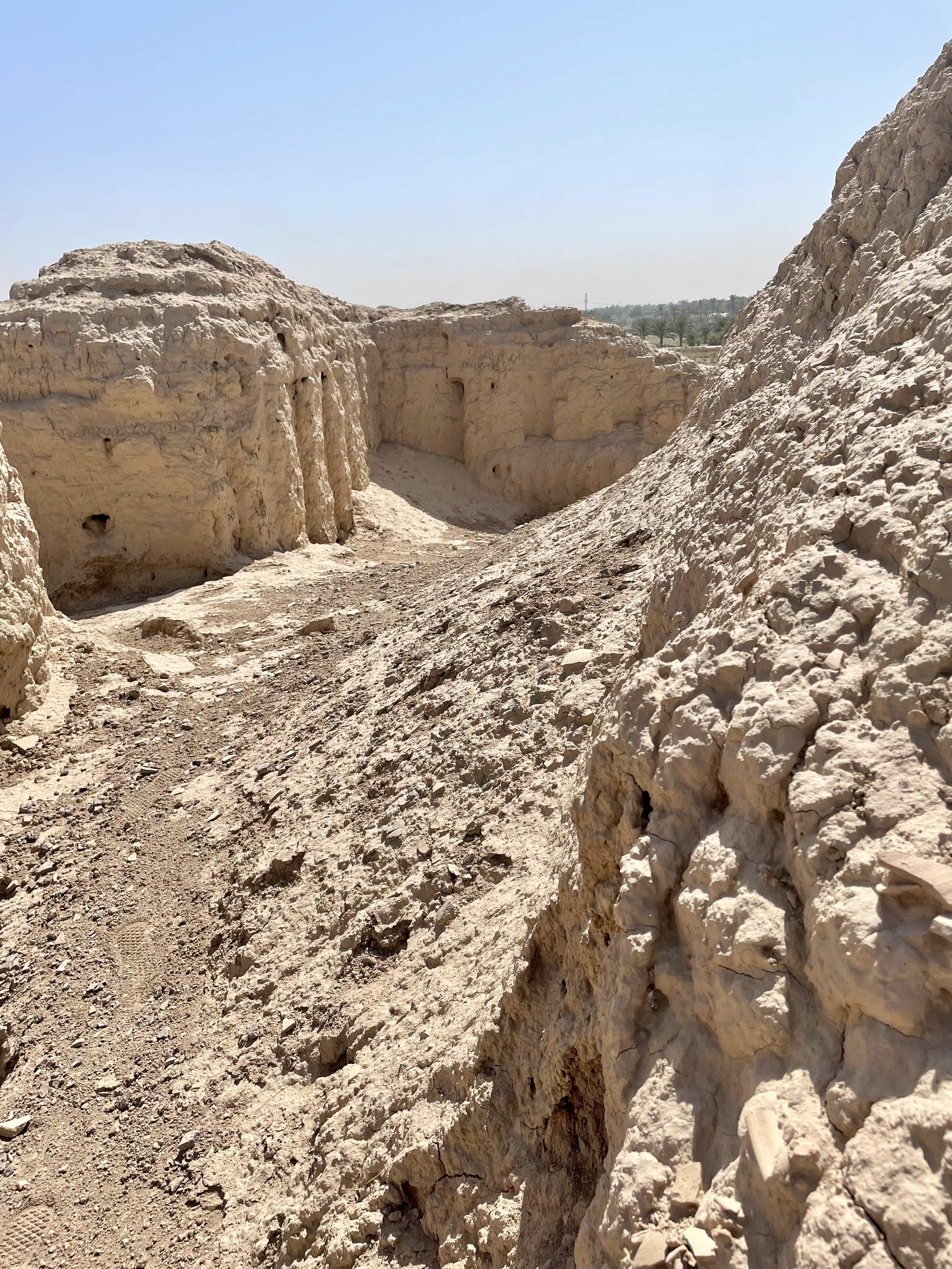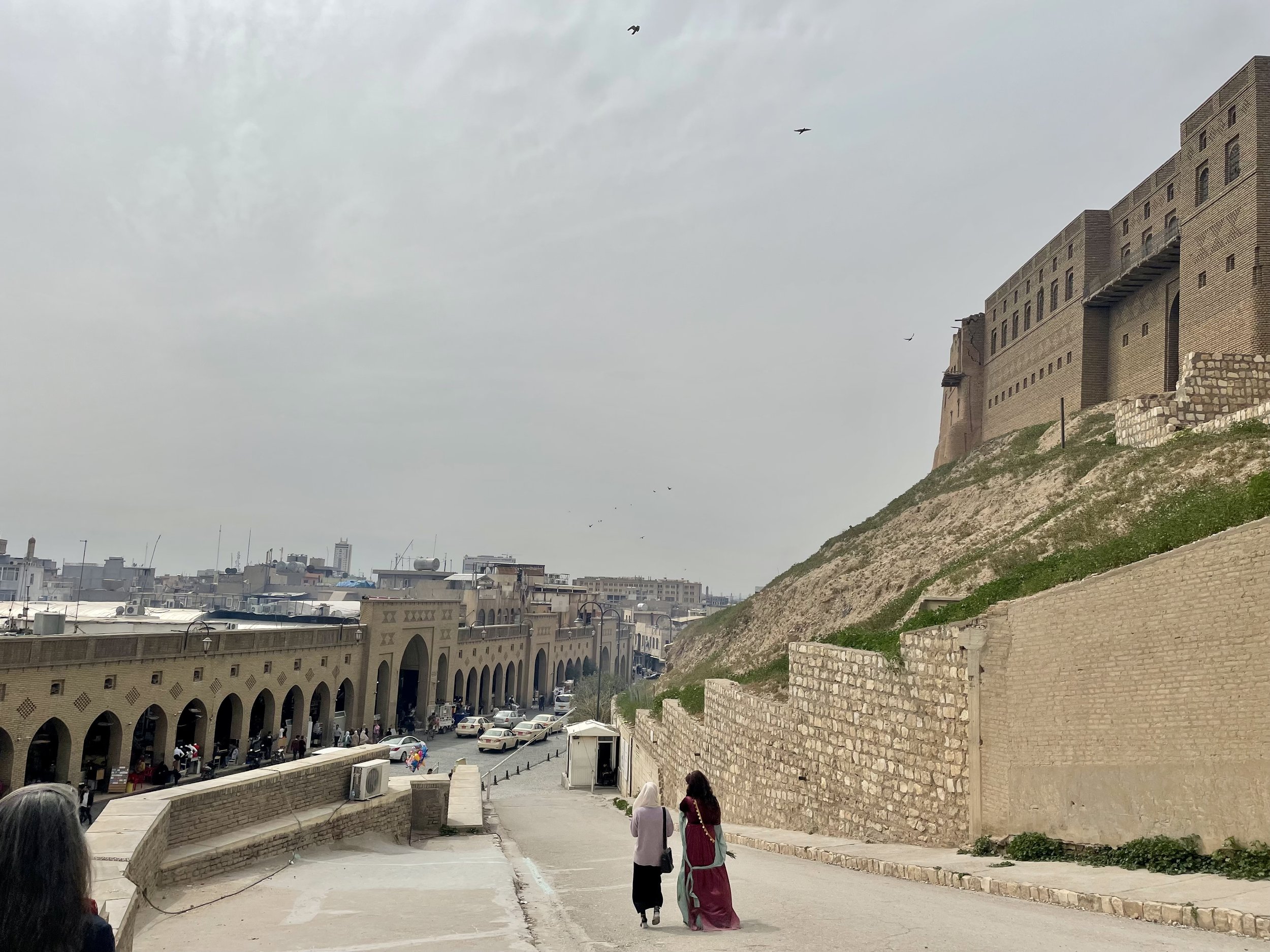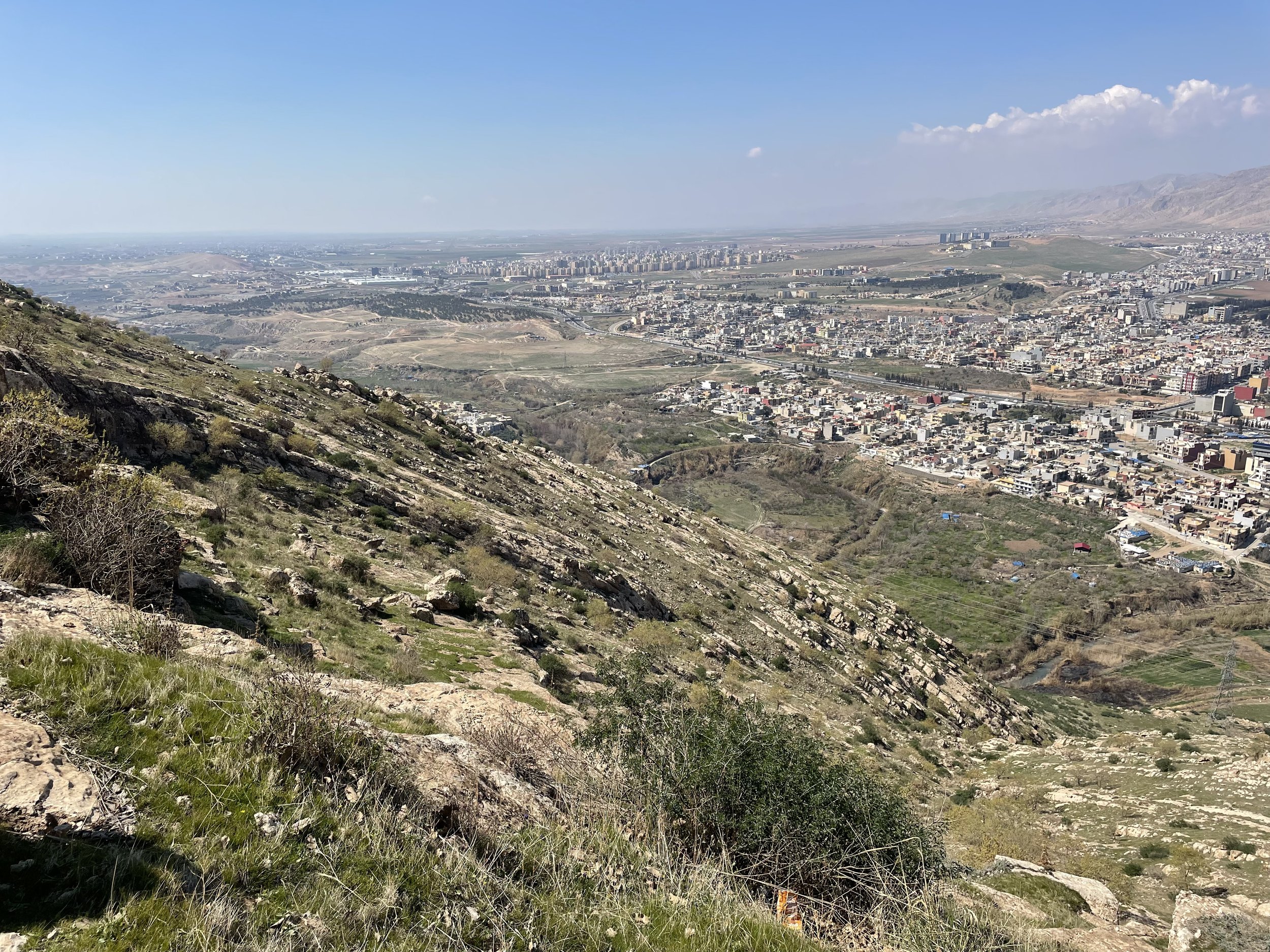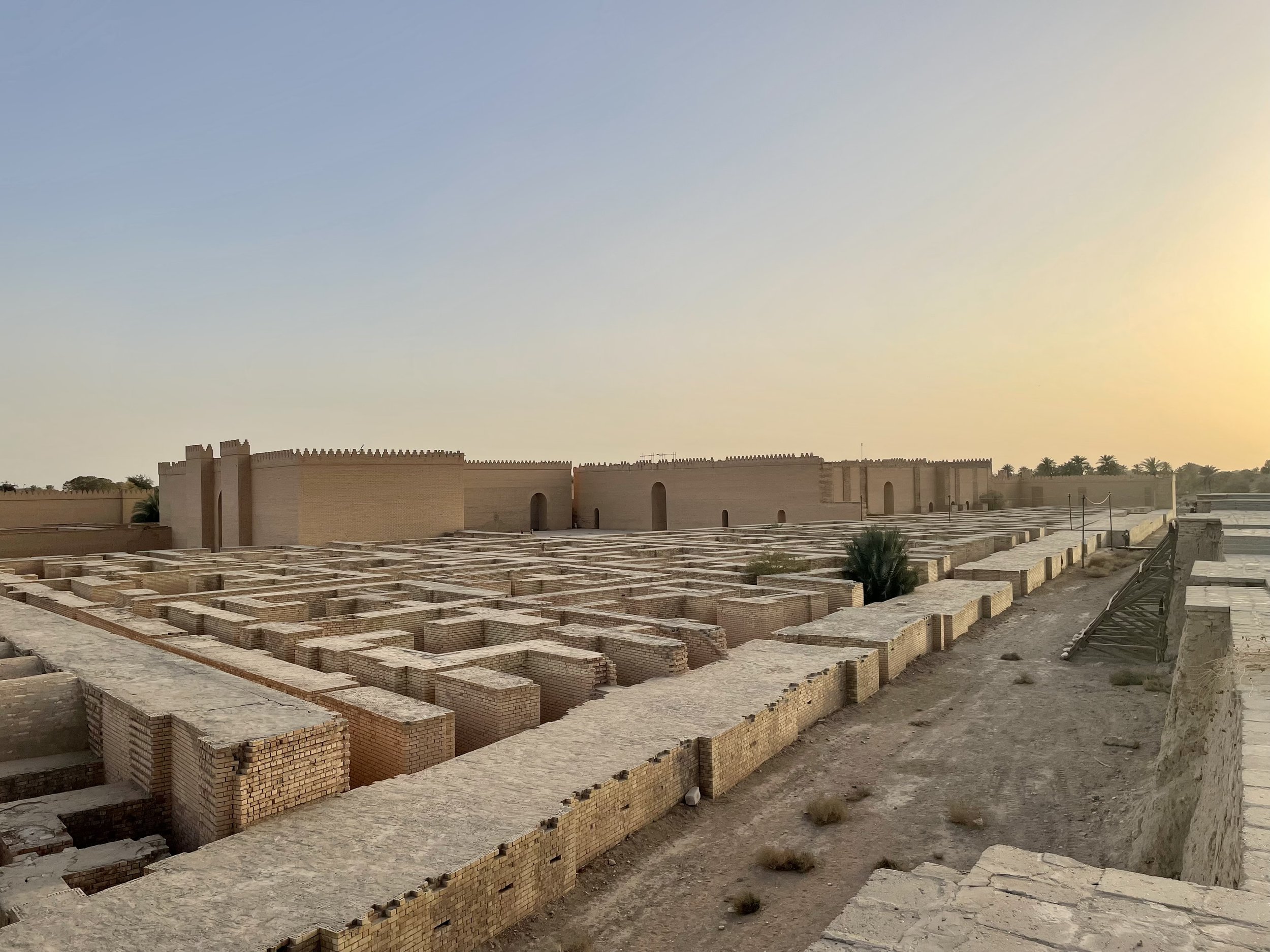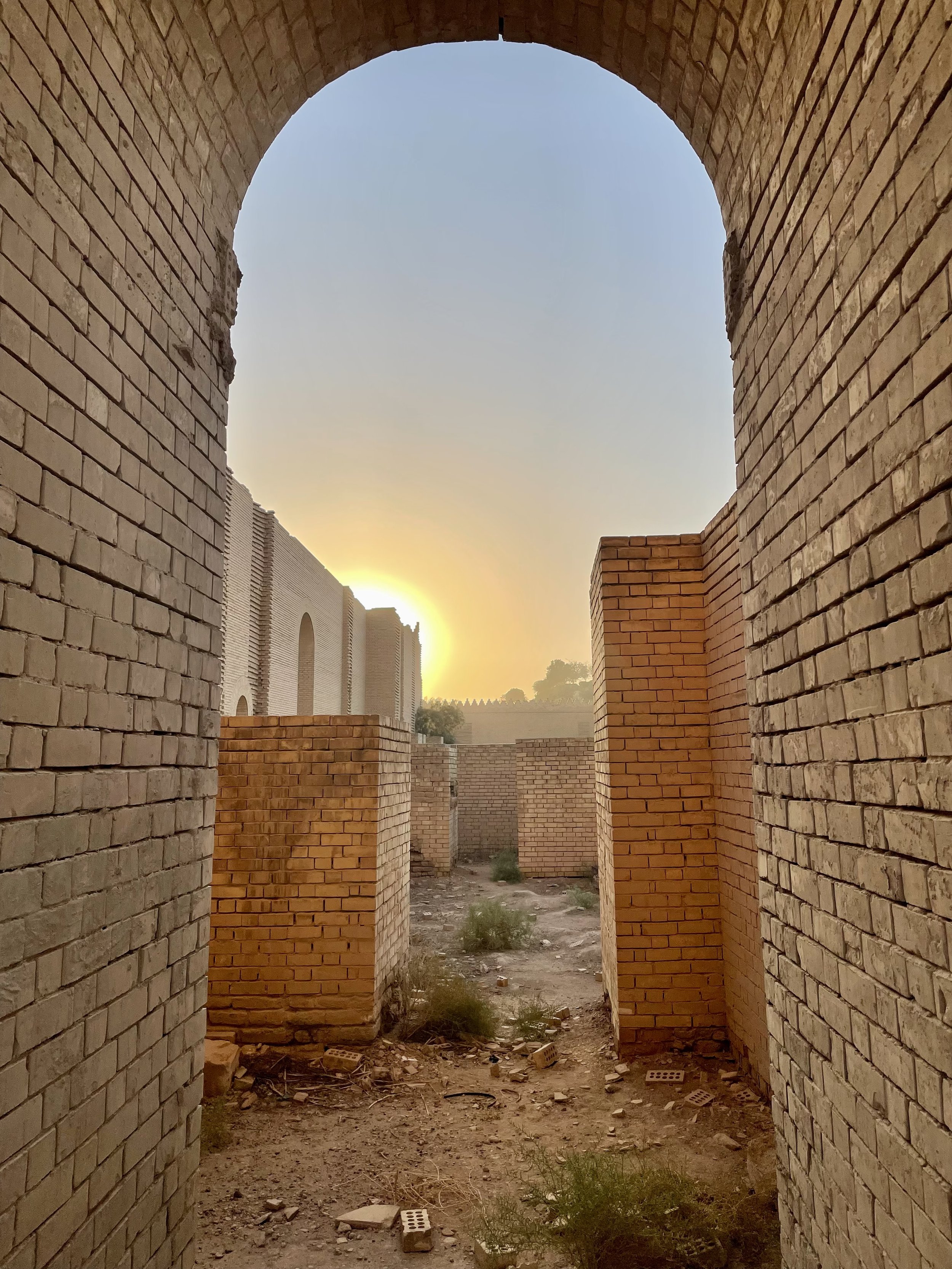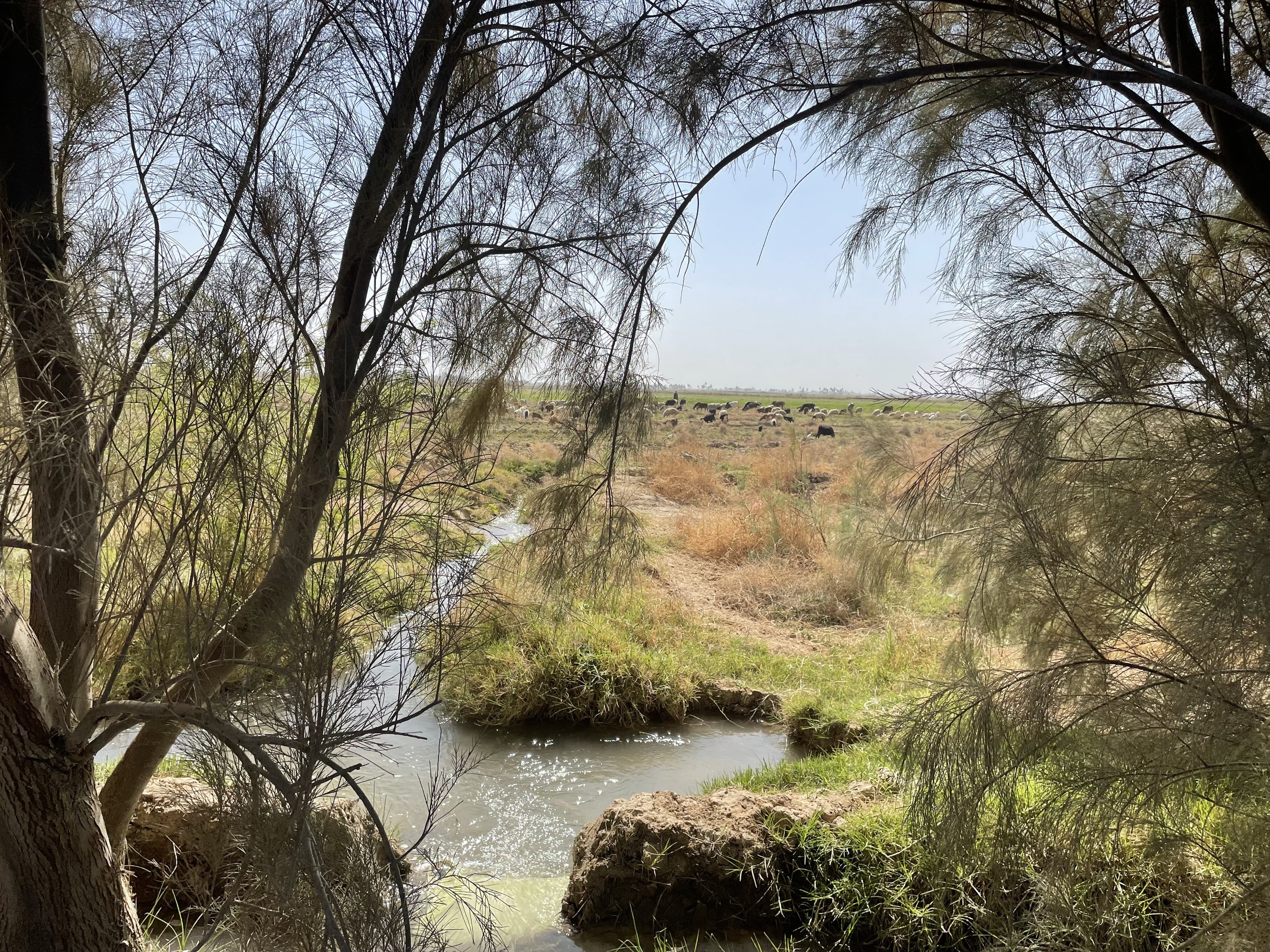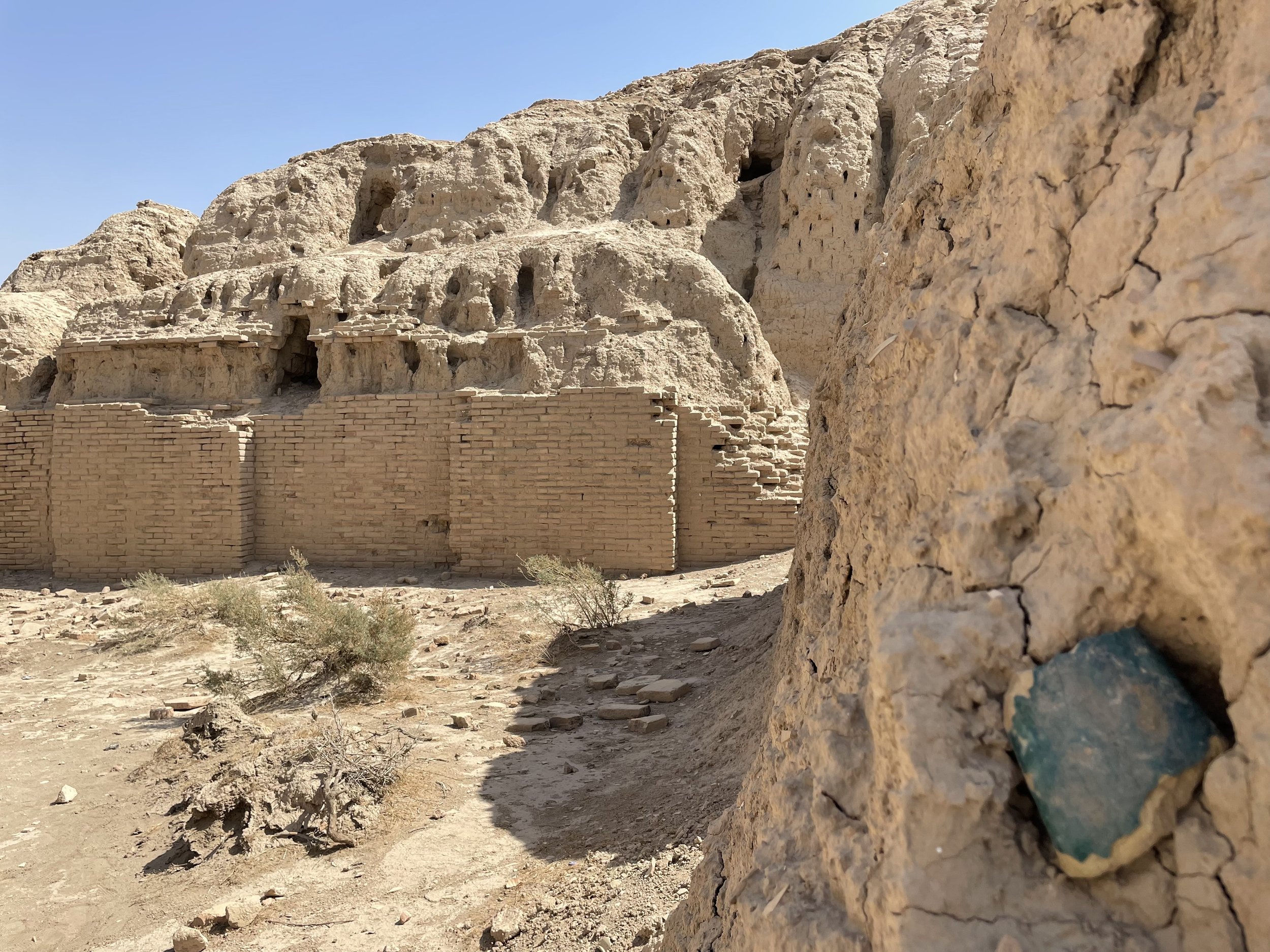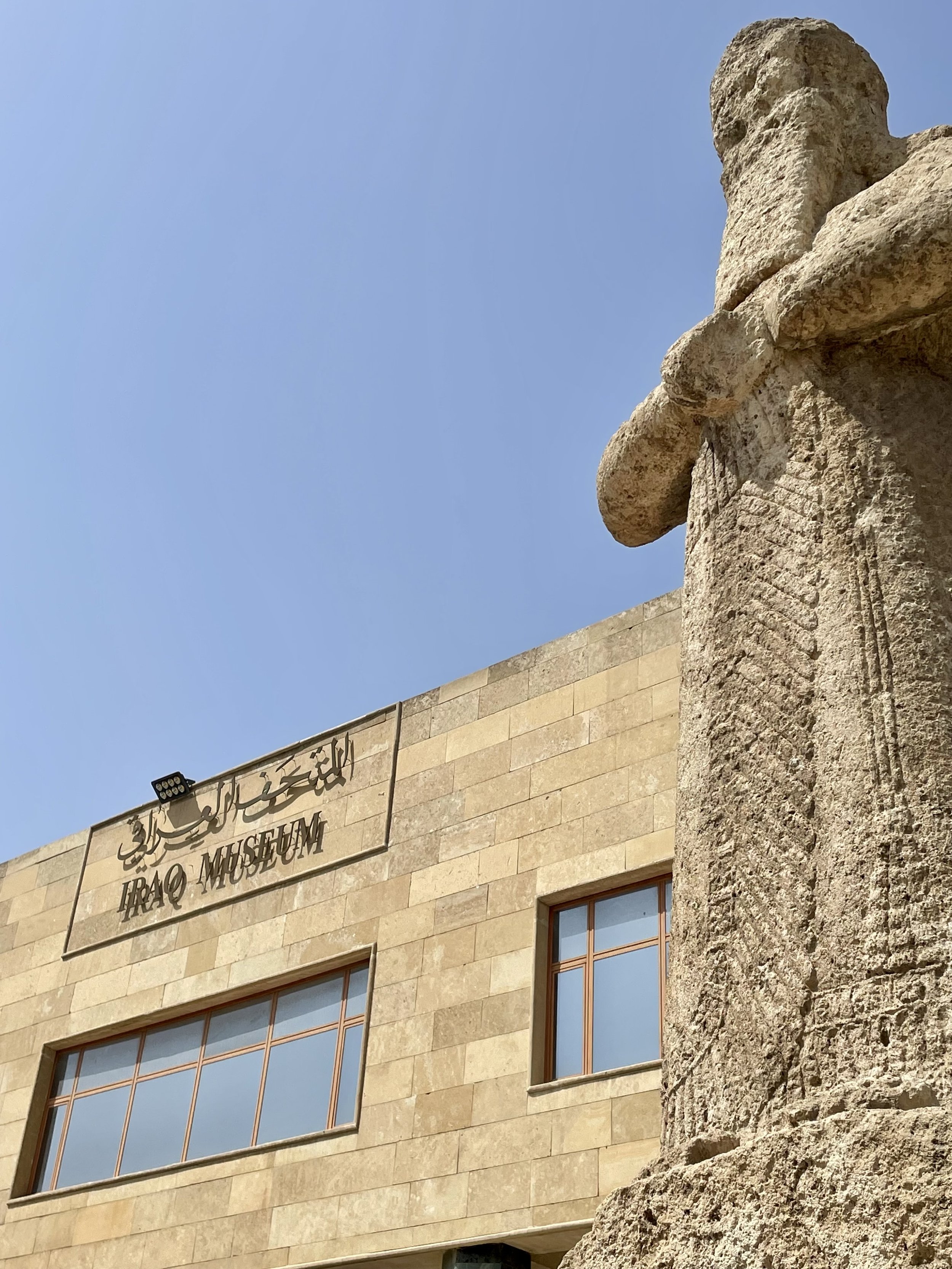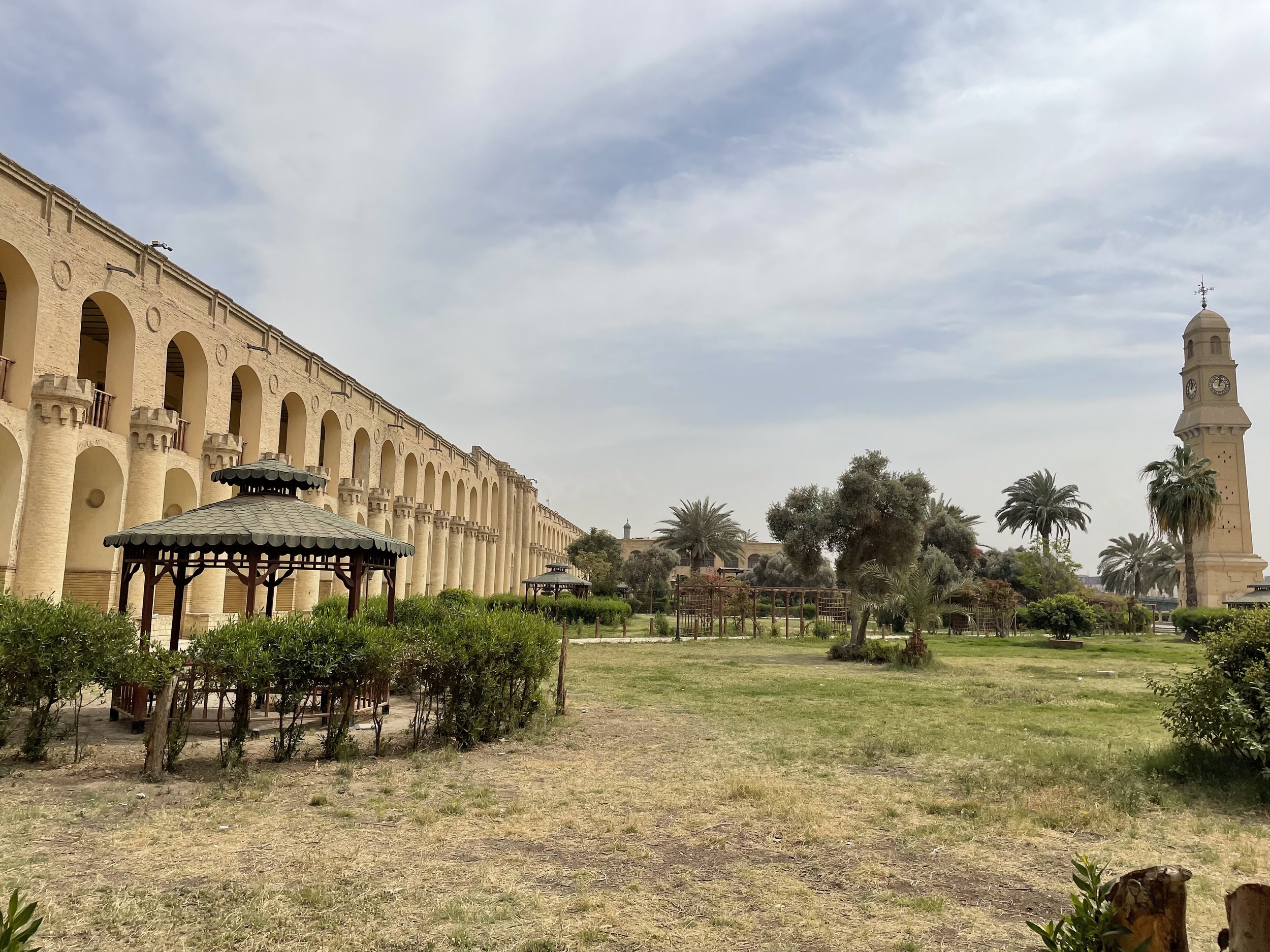A conference in Rome on Transnational Radio Broadcasting in the Middle East and the Mediterranean, between production and reception, 1920-1970
Dr. Peter Wien, President of TARII, gives opening remarks at the conference
How to conceive of radio as a historical phenomenon – this question dominated two and a half days of conference debates in Rome from June 22 to 25, 2022. 21 historians from various parts of the world met at the German Historical Institute, the Danish Academy, and Villa Mondragone of Tor Vergata University, all in Rome, to discuss whether radio should be grasped merely as a technical device for the transmission of sound via electromagnetic waves, or if its meaning and impact turned it into an object with an agency of its own, quasi as a historical actor with a social life, and an object of desires and cultural, as well as political projections. Many of the papers that the 16 panelists and the 5 conference conveners discussed focused on the biographies of those whose lives were touched by radio after it became a technically and commercially viable device for the spreading of information, for entertainment and commerce, and for propaganda during the period between the two World Wars and the Cold War. Topics ranged from the politics of global broadcasting in a colonial world (BBC, international Dutch Radio, Radio Bari), to the radio as a weapon in struggles for decolonization, to the effects of radio on musical forms, gender roles, and popular culture in the performing arts in Middle Eastern countries.
In the opening presentation, Simon Potter shared insights from many years of research on the history of the BBC, reminding the conference participants that the station’s aura of superior professionalism and evenhandedness did not protect it against a racialized world view and colonial parochialism. Until the late 1930s, the BBC lagged behind other transnational broadcasters in adopting foreign language programming. In contrast, the Italian fascist Radio Bari followed an entirely unapologetic propagandistic agenda and used the popularity of Arab musicians with local fame to attract listeners’ attention, as Emily Mellen presented in her paper on the legendary Iraqi Jewish singer Salima Murad and her recordings that were broadcast via the short-wave transmitter in Bari, Italy.
Two more papers explored the impact that radio as a new medium had on the careers of Middle Eastern female artists. Radio was a token for the entry of Western modernity in Middle Eastern societies, either through Western technology or as part of Western colonial agendas[PVO1] . In Lebanon, the French sponsored Radio al-Sharq gave room to female singers to expand careers that, as in the case of Salima Murad, would have been restricted earlier on to the shady realm of nightclubs, which were often associated with prostitution. The papers by Janina Santer and Diana Abbani introduced radio as a highly gendered site of popular culture, especially at the time when newly emerging independent states had to define their place in a postcolonial world between modernity and perceived authentic national mores and values.
Another major line of inquiry shared by several of the papers followed the biographies of radio men and women. Many of those who worked as speakers on international radio moved frequently between nation states, across porous or even ideological boundaries. Migration was a condition for their employment, sometimes forced in the aftermath of armed conflict, sometimes deliberate. Andrea Stanton focused on the group of radio presenters, men and women, from Arab countries who moved from national stations to United Nations radio in New York city and Geneva. Vincent Kuitenbrouwer looked at Dutch Arabic broadcasting evolving out of attempts by the government of the Netherlands to influence the debate in Arab lands about Dutch involvement in Indonesia after the end of the country’s colonial rule there. A Dutch diplomat-turned-orientalist recruited speakers for his radio program from among Arab students at Leiden University, turning his station into an agent of cultural diplomacy that was hard to control for the foreign ministry. Caroline Kahlenberg introduced the character of a Palestinian scholar of Semitic languages who first became a Hebrew language presenter on Radio Palestine and then, after 1948, the head of the Hebrew service of radio Damascus.
In the world of international radio, language was a unique asset for migrants as they could make their native or acquired skills available to transnational broadcasters, sometimes choosing bad company. Language, however, was also a crystallization point for the hegemonic power of state broadcasting, but also within the subversive potentials of boundless radio waves. Sarah Lemmen’s paper covered foreign language broadcasting in Franco’s Spain to Eastern Europe. Spanish authorities, it turned out, hardly set any limitations for whatever exile group was available in Madrid to launch its own program, sometimes more, sometimes less in line ideologically with their hosts. Nicholas Glastonbury and Robert Elliott focused on Kurdish and Turkish language broadcasting by communist exiles from Soviet Armenia and East Germany, as well as Hungary, respectively. Siavush Randjbar Daemi told the story of the Iranian socialist Tudeh party and its radio program, stationed in communist Eastern Europe, and its unexpected collaboration with the radical religious circles around Ayatollah Khomeini. Maria Hadjiathanasiou addressed the subversive power of a language that the British colonizers were unable or too slow to understand. Her paper showed that Radio Athens played a crucial role in Cyprus’ decolonization struggle sending coded messages to Cypriot independence fighters in the late 1950s.
Most of the papers addressed problems related to the identification of primary sources, between the usual scarcity of materials that originate from archives other than those produced by colonial powers, and the specific problem of the documentation of radio programming that is naturally fleeting and evasive. Only rarely, recordings or transcripts of broadcasts exist so that it is difficult more often than not to reconstruct the actual content of programs. Radio is therefore both a material, i.e. technical, and immaterial phenomenon with deep implications for the way radio history is documented. In a fascinating reflection on this topic, Ziyad Fahmy’s keynote speech introduced the audience to the anarchic world of early Egyptian private radio where broadcasters were also traders of radio equipment and therefore created content, both as entrepreneurs and respected impresarios attracting leading intellectuals of their time to speak on the waves. When the Egyptian state established its own radio as a hegemonic voice in the mid-1930s, it banned the multitude of private competitors and reduced them once more to mere salesmen. Arthur Asseraf pointed to a similar phenomenon in French Algeria where the colonial state tried to control access to radio transmitters from the mid-1920s, while in mainland France there was a colorful mix of public and private stations. During the Algerian Revolution, foreign radio stations from Morocco and Tunisia, and not to forget Radio Cairo fought their own battles competing with the hegemonic French institution. The role of the state in radio broadcasting, and the usage of radio technology in social engineering appeared again centrally in Sara Farhan’s paper about Radio Baghdad, its public health programming in the 1930s, but also the subversive role played by the Iraqi King Ghazi I who established his own radio station in the late 1930s to spread a militarist nationalist agenda thus putting into question the divide between public and private broadcasting.
There are only few archives offering insights into the reaction and perception of audiences, however. Sahar Bostock was able to access listener reactions in her paper about both Jewish and Palestinian responses to the respective language broadcasts of Radio Palestine during the Mandate years, based on how these were discussed in the press and letters to the editor. In one rare case, Anandita Bajpai was able to get very close to Indian listener communities of East German radio of the 1970s and 80s, based on anthropological field work among former members of listener clubs.
In general, the papers took on the challenge arising from the difficulties in identifying archives as a starting point rather than an obstacle. They turned to the many adjacent archives, primarily in print culture. The discussions and comments about the papers made it clear that a cultural history of transnational radio broadcasting relies on the very mix of perspectives and primary sources that the conference participants presented, between the materiality of radio objects, the live stories of those involved in radio programming and production, and the radio as an immaterial target of political and cultural projections. Where one listened, and in whose company, mattered (at home, in the coffeehouse), but also on who’s dime (who could afford to purchase a radio receiver and make it available to others). The transgressing, borderless physics of radio waves, and consequently the politically and socially transgressive potential of radio programming encouraged radio people to move where their services were in demand, as part of a labor market that intersected with migration patterns and transnational political conflict lines. Radio thus became a weapon in political competition, but also the target of a great deal of anxiety when the rush among opposing ideological camps to outdo each other in a perceived battle for “hearts and minds” determined interwar and cold war struggles, under the assumption that those ruling the waves would prevail on other battlefields, too. The conference in Rome certainly wasn’t the final word on this fascinating history at the intersection of the cultural, political and technical fields, but it created a framework for radio historians to rely on in their future inquiries.




